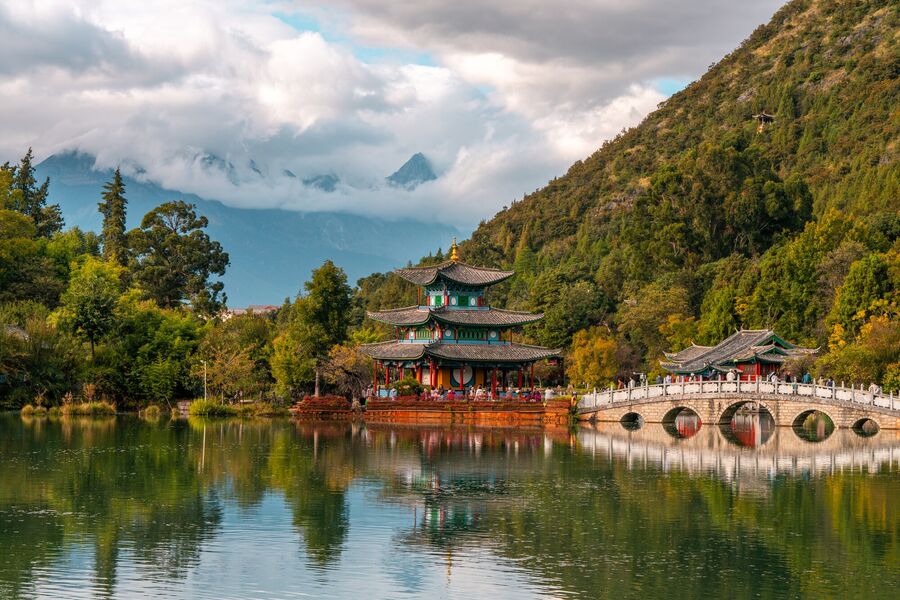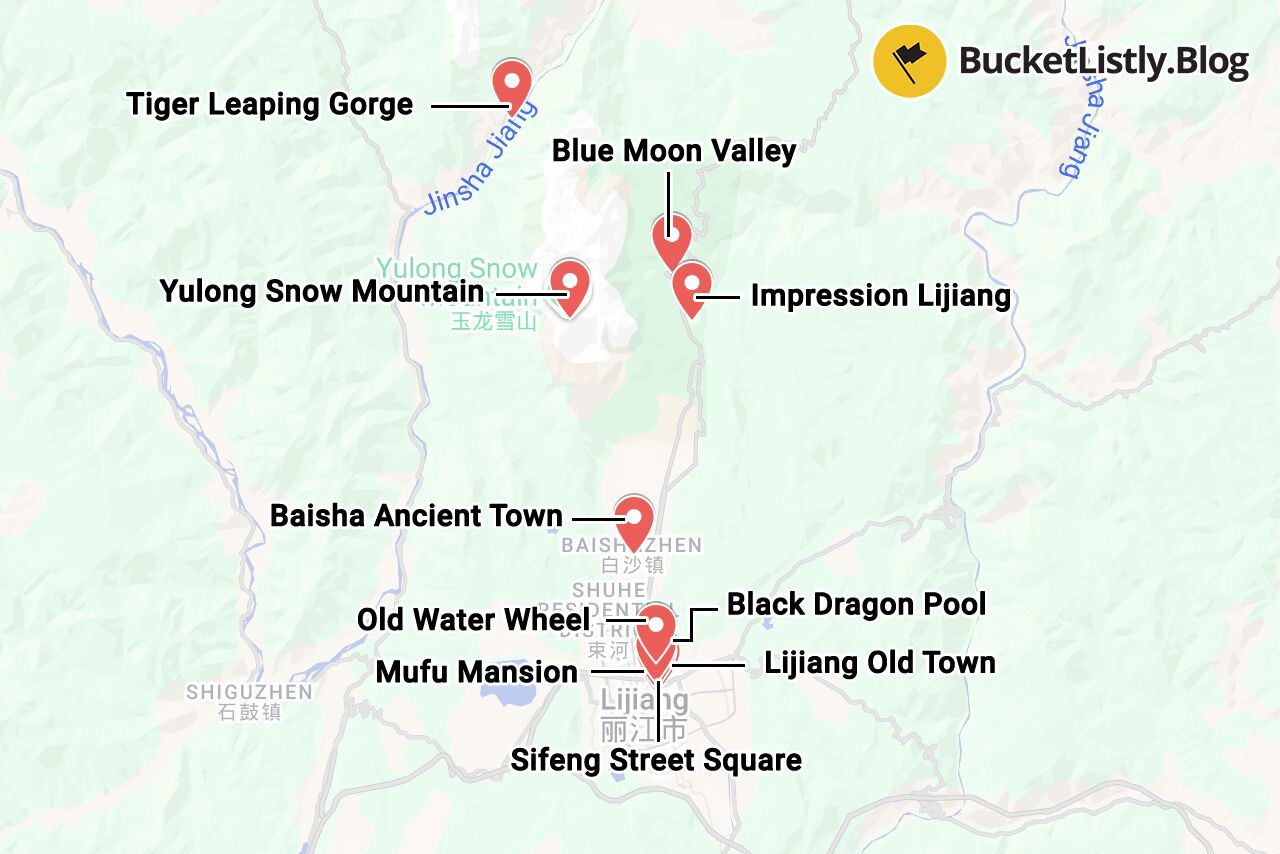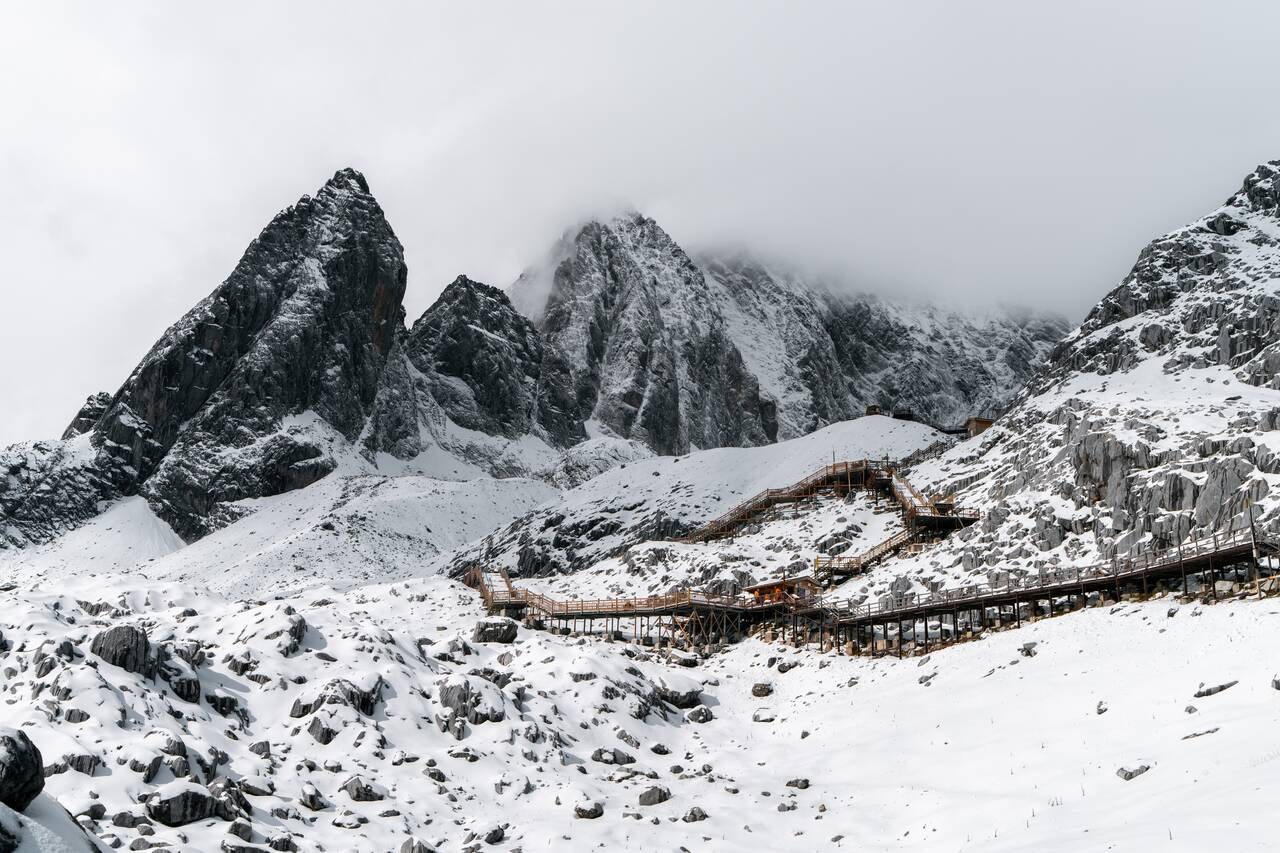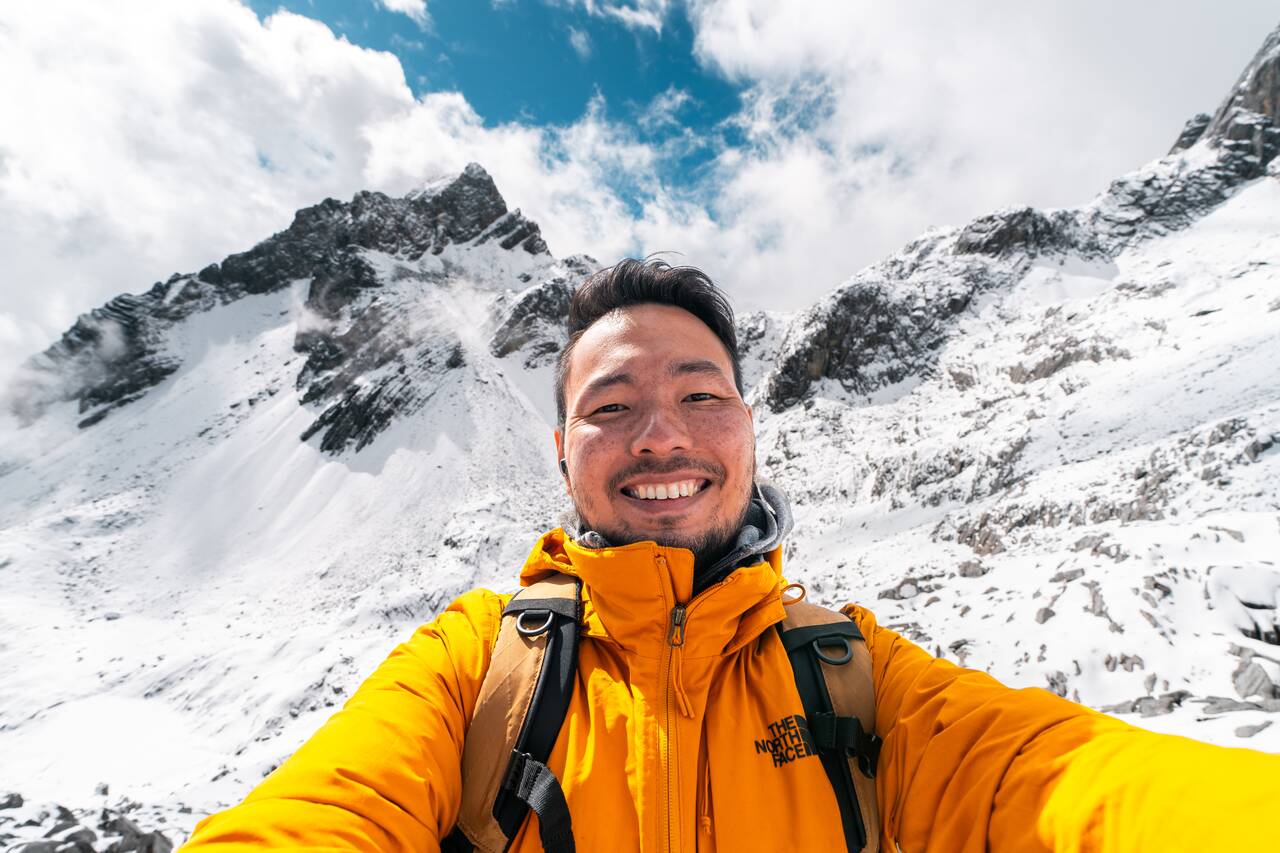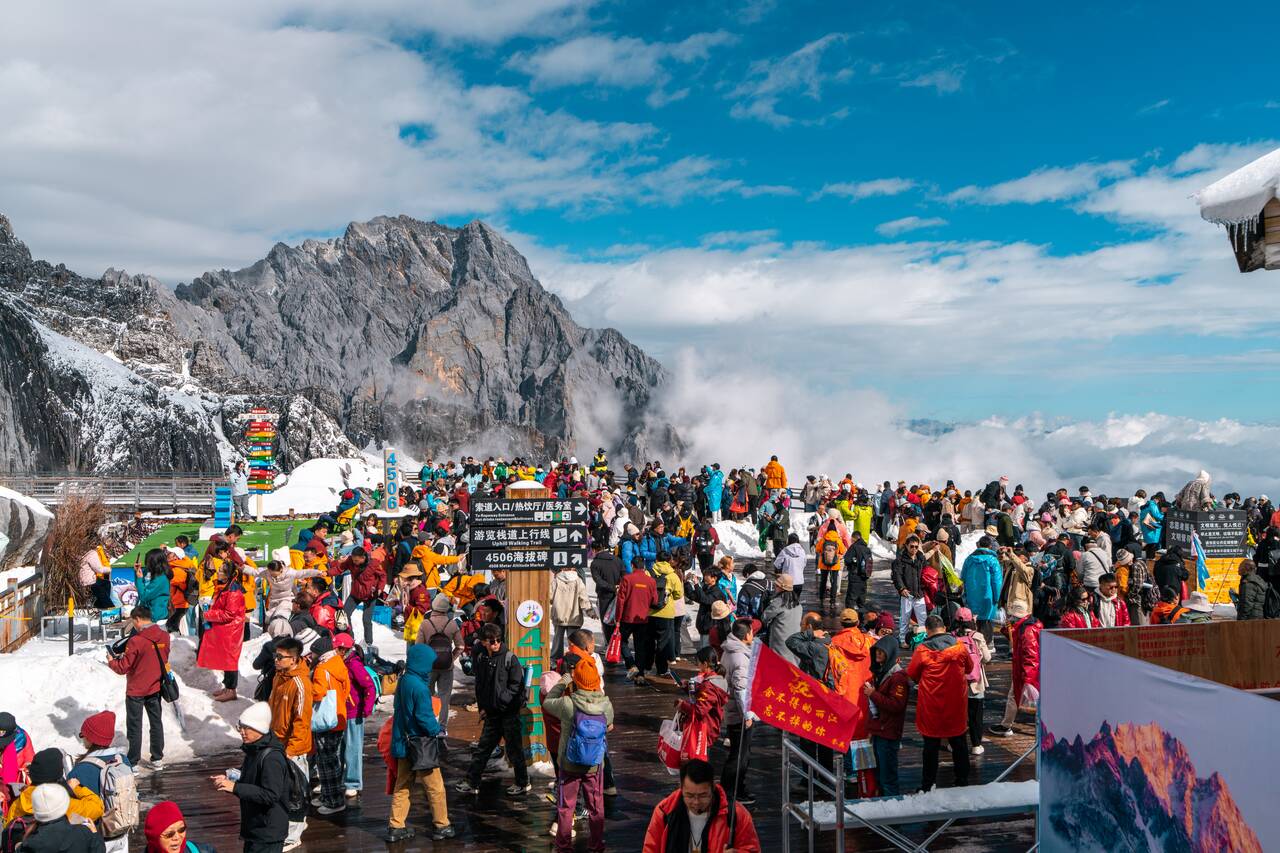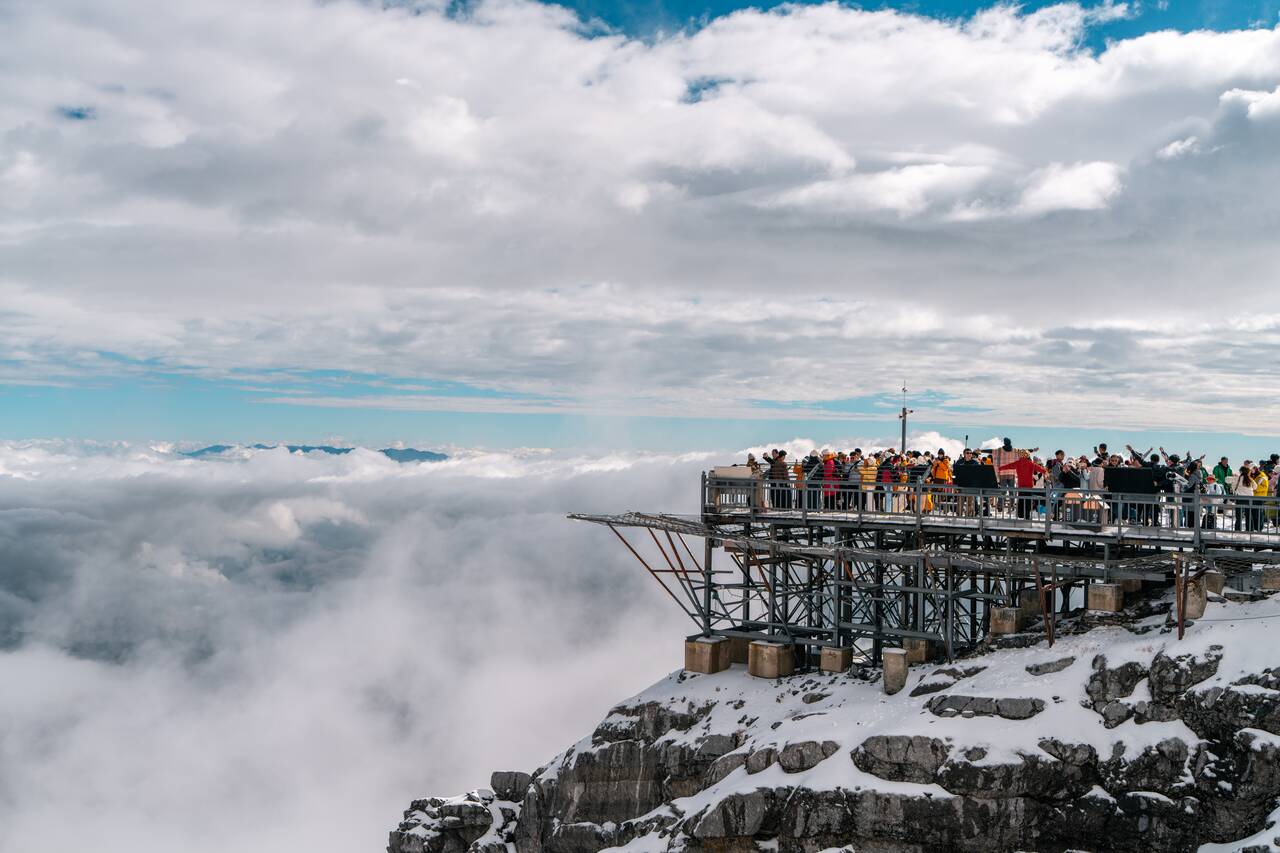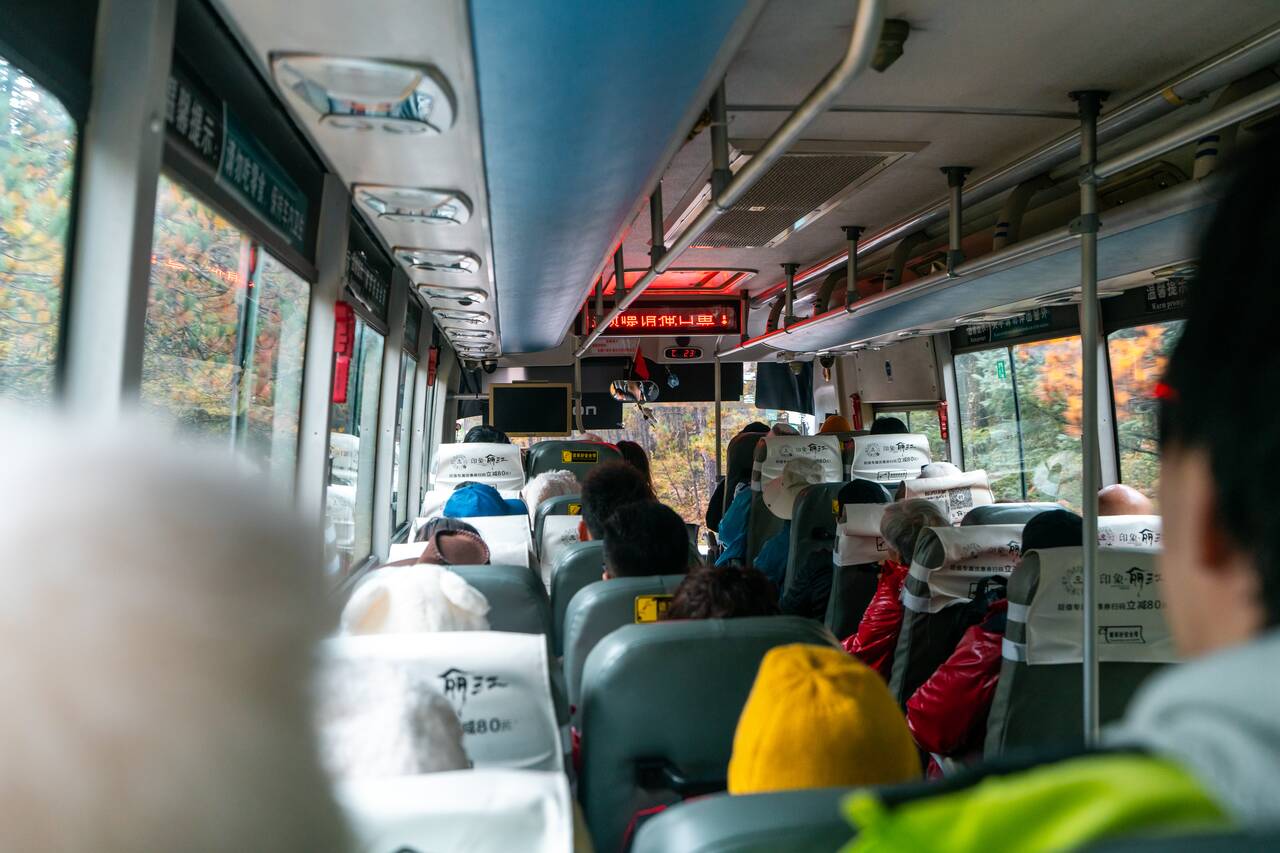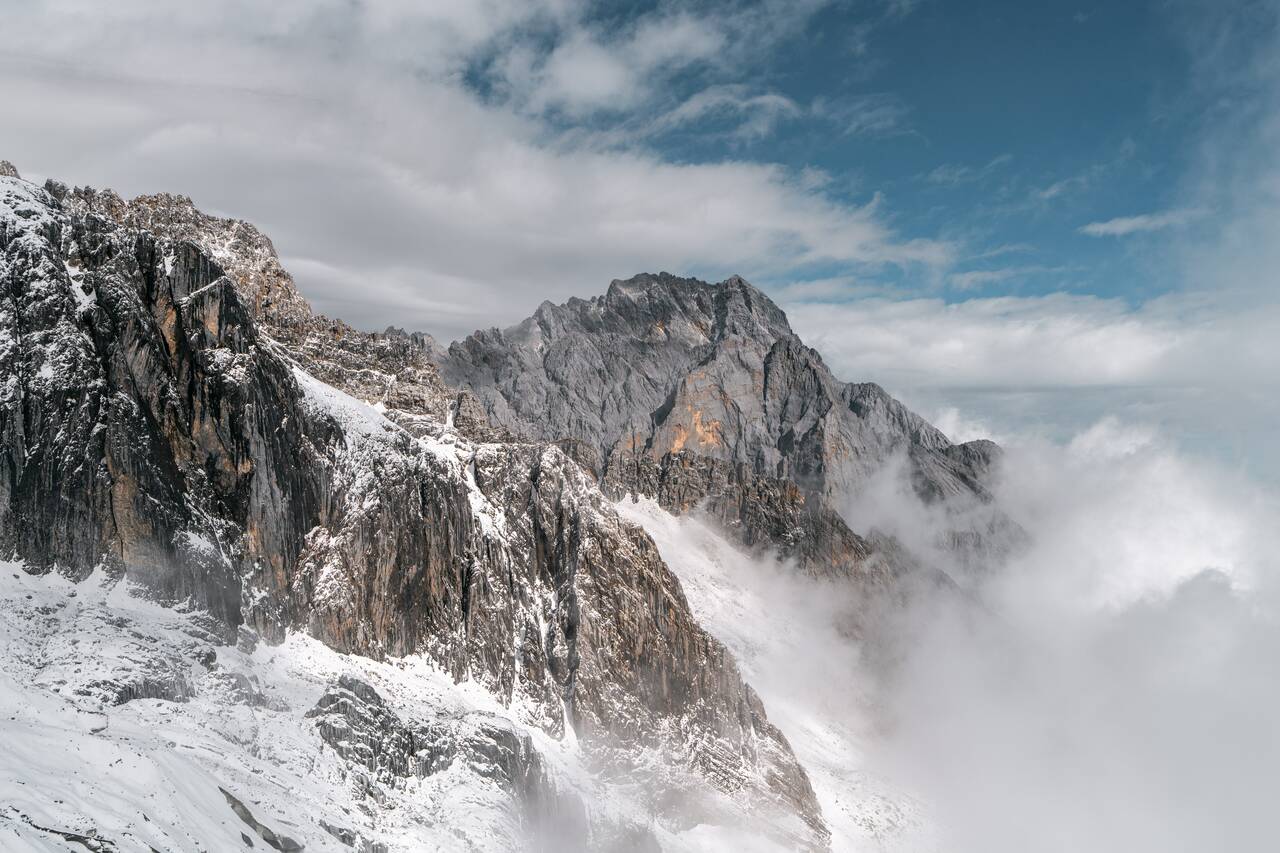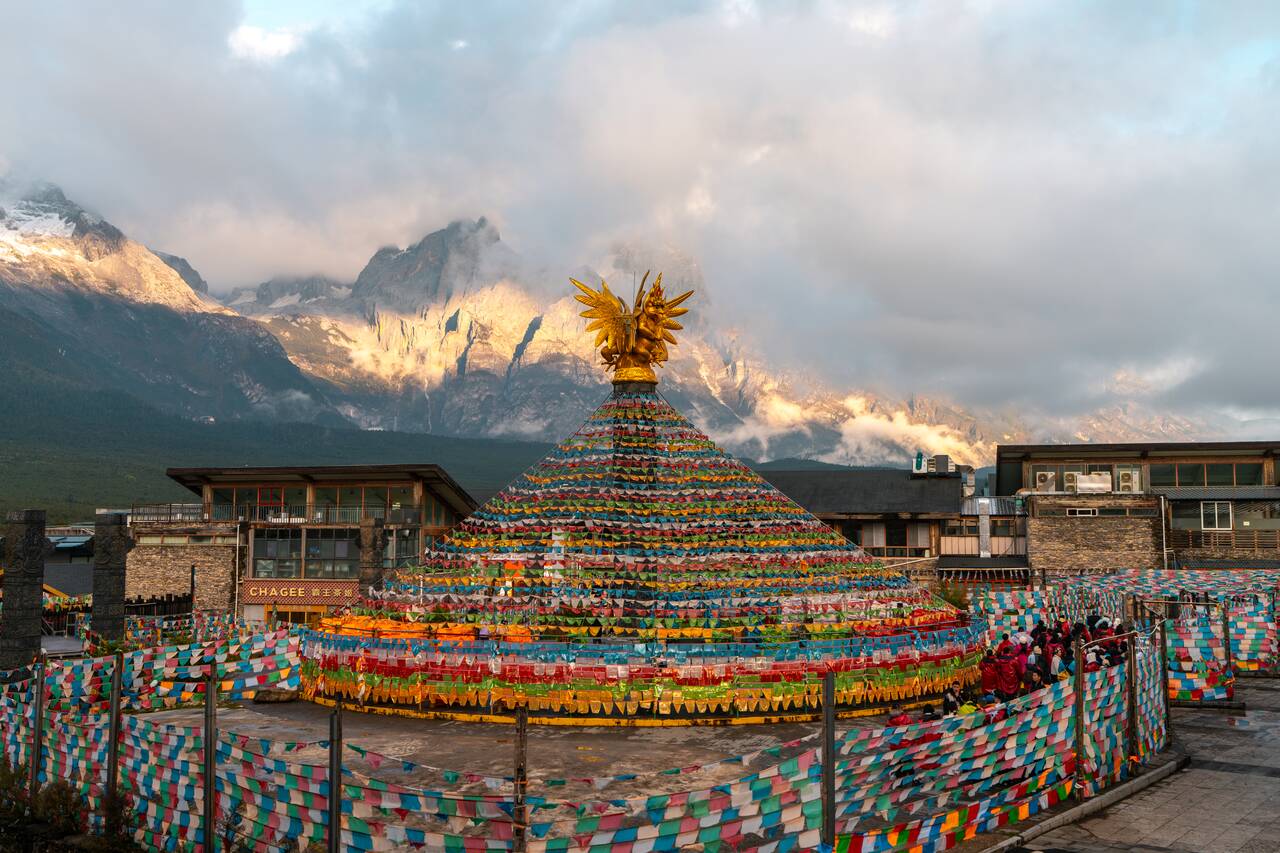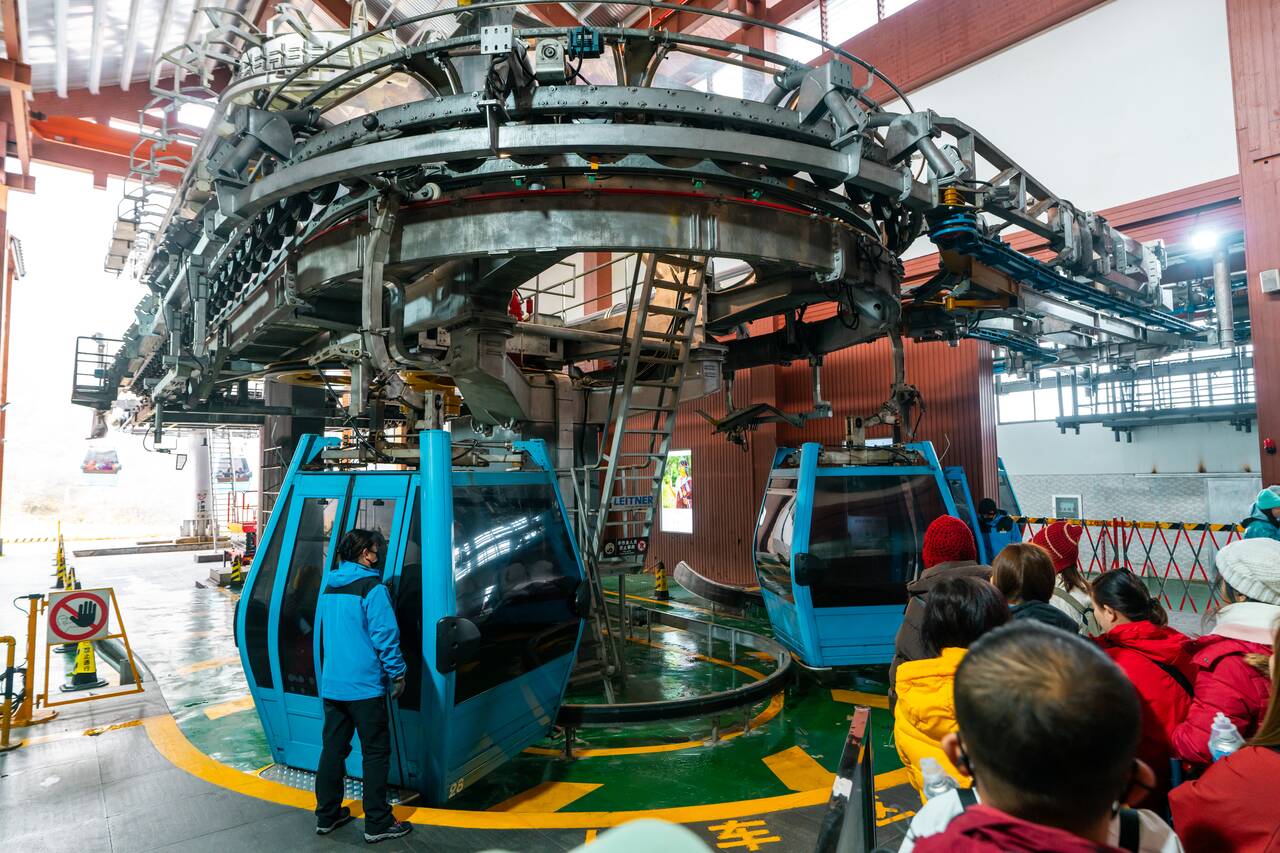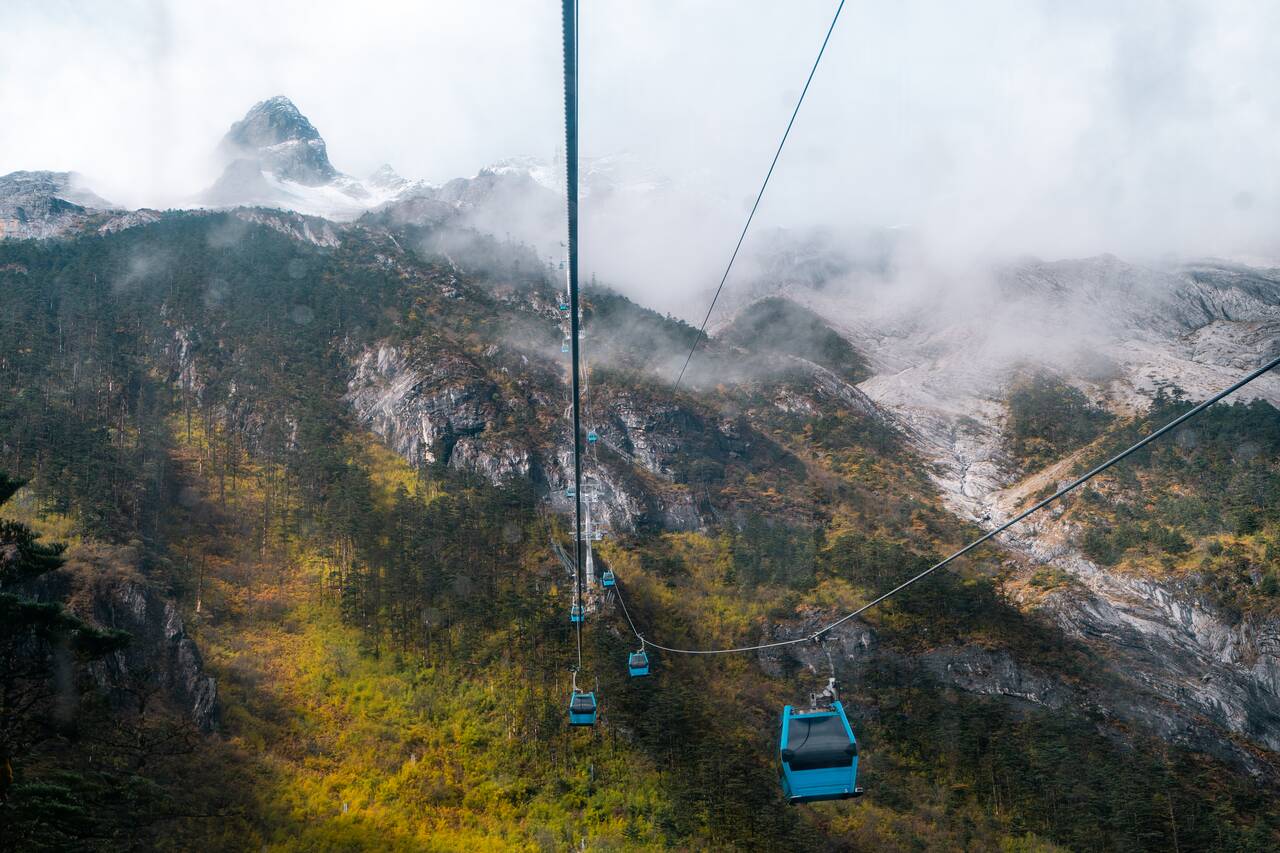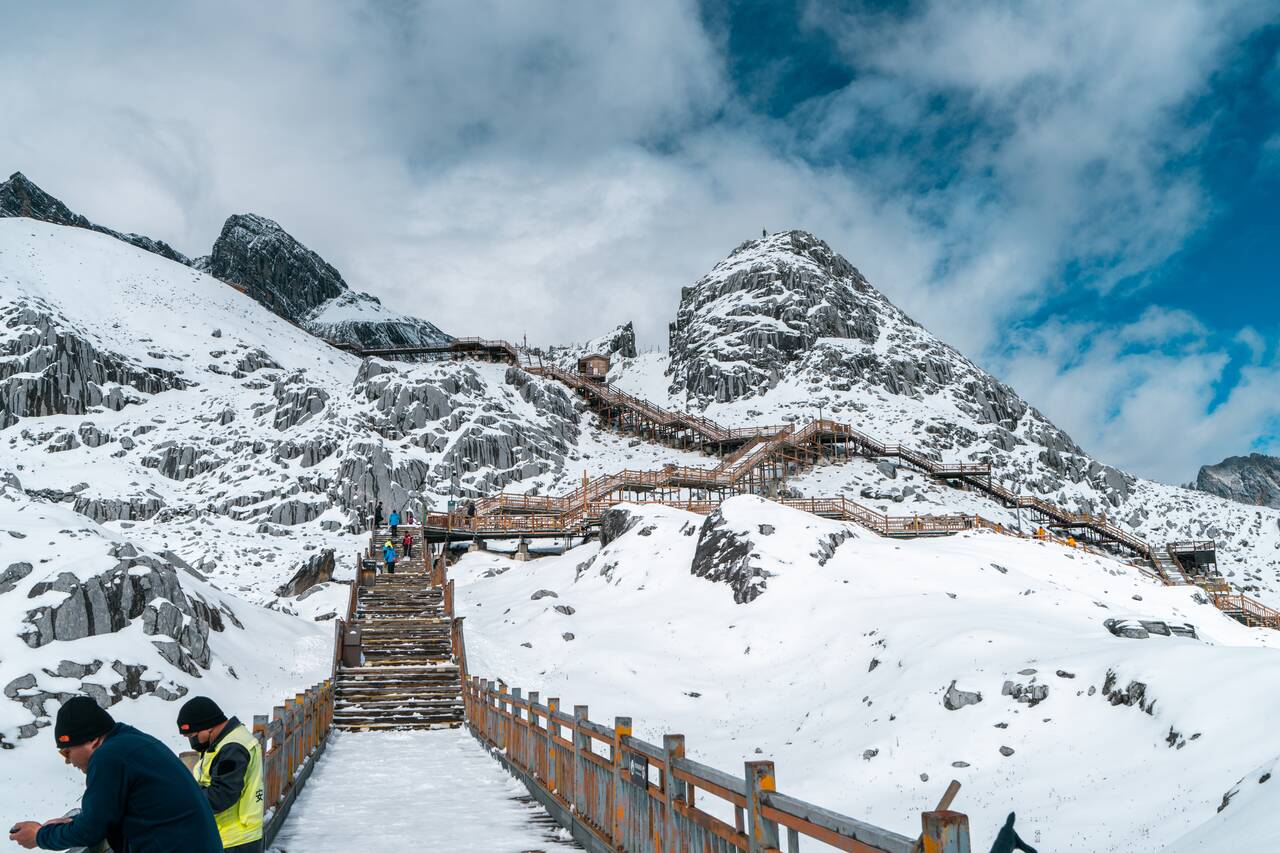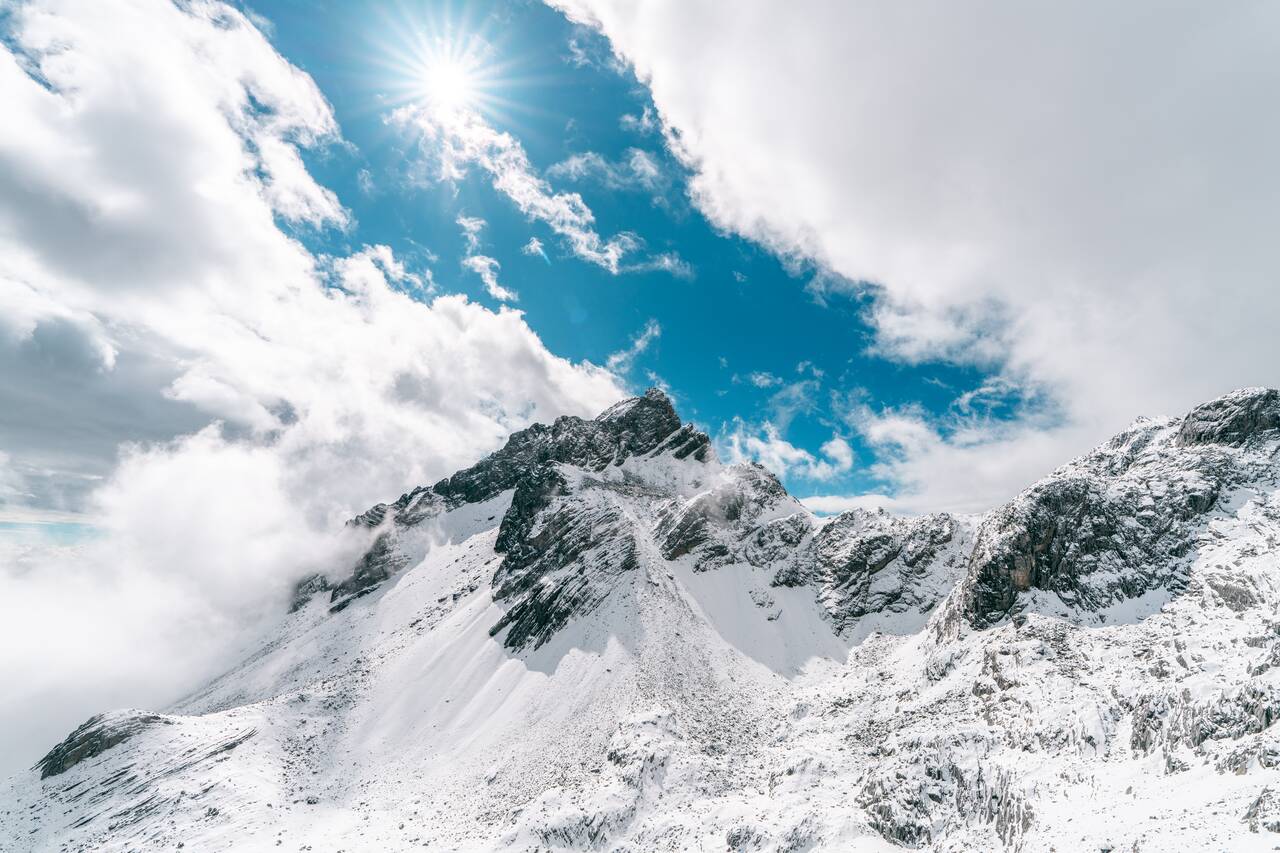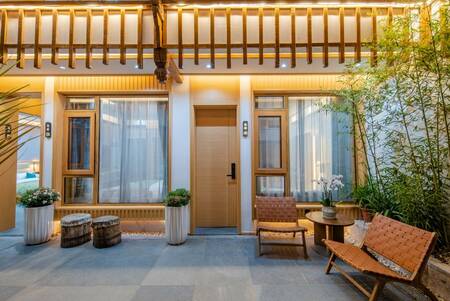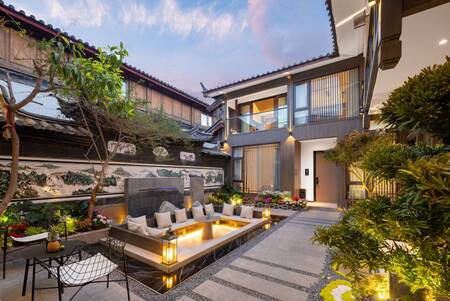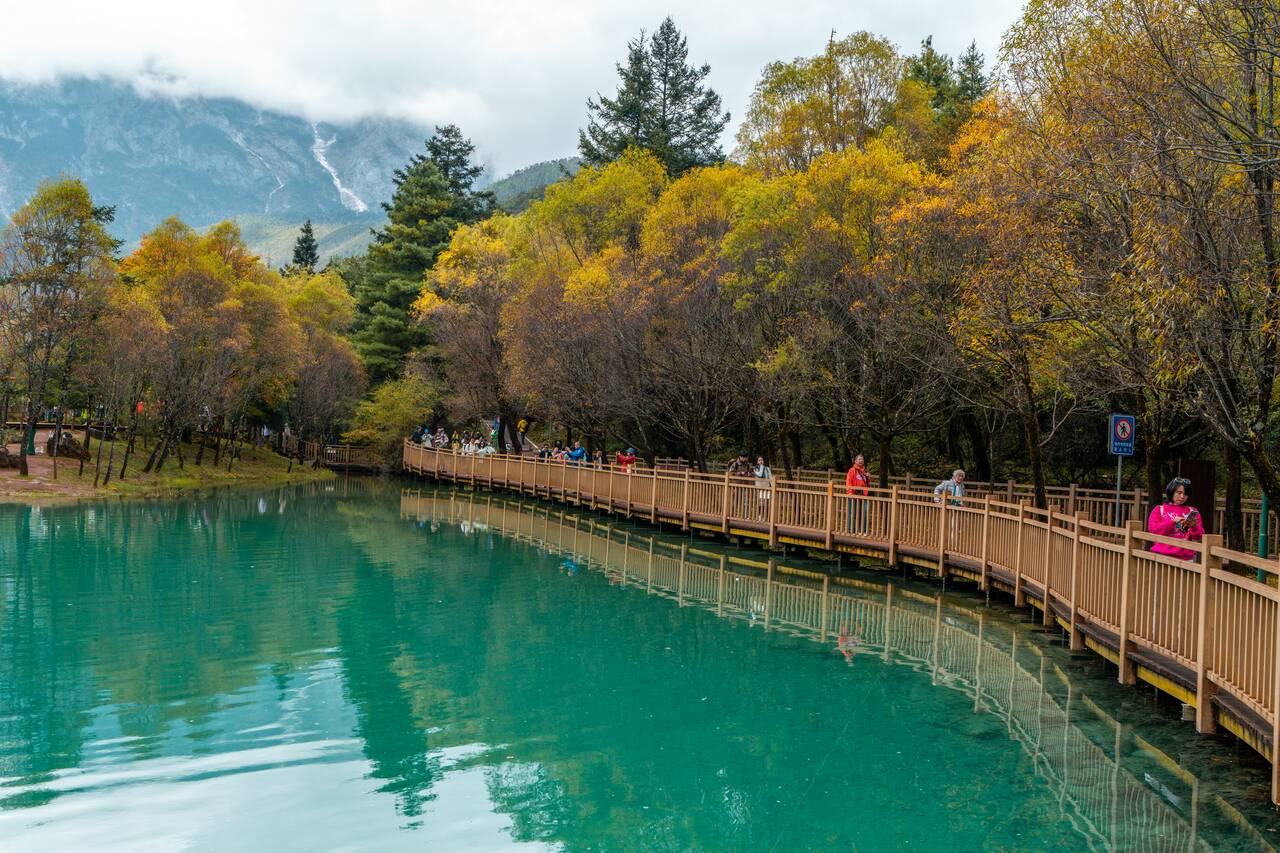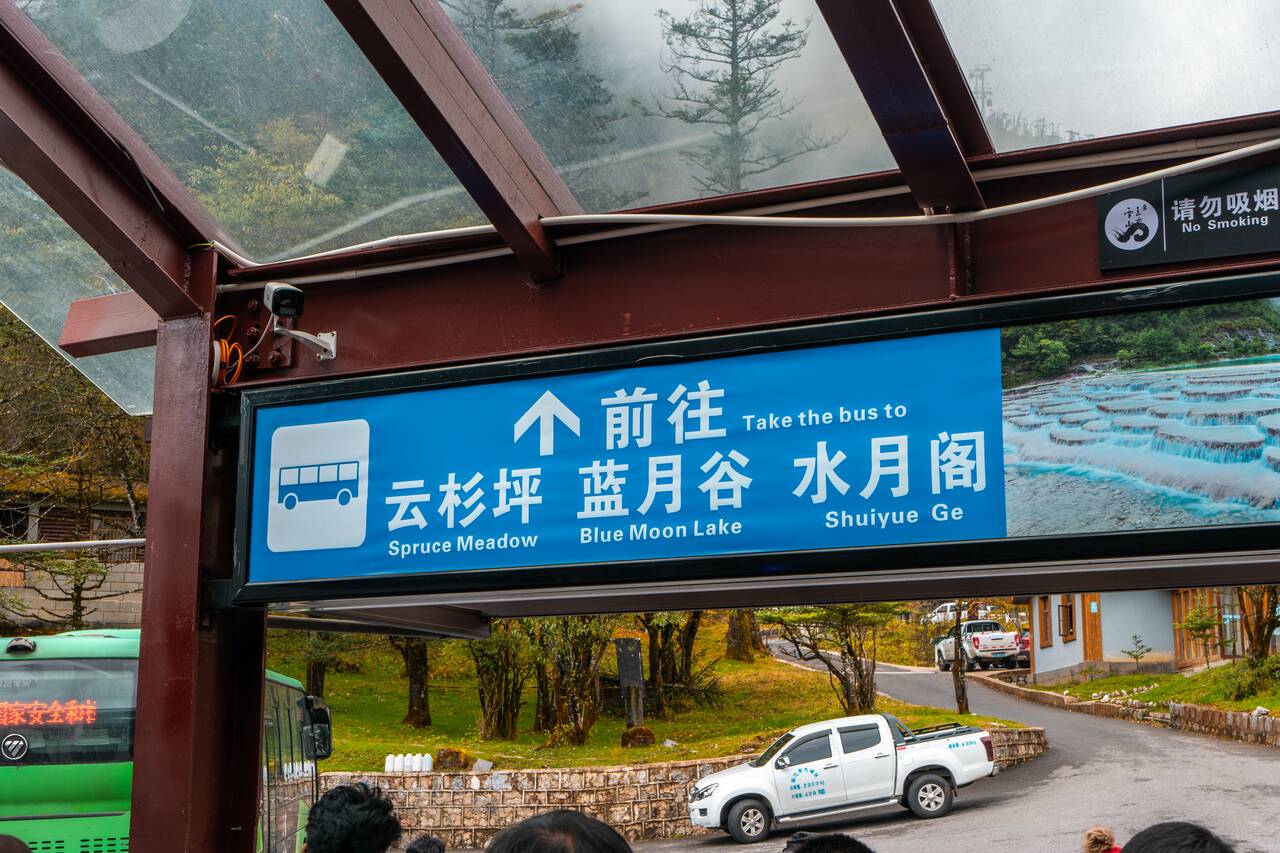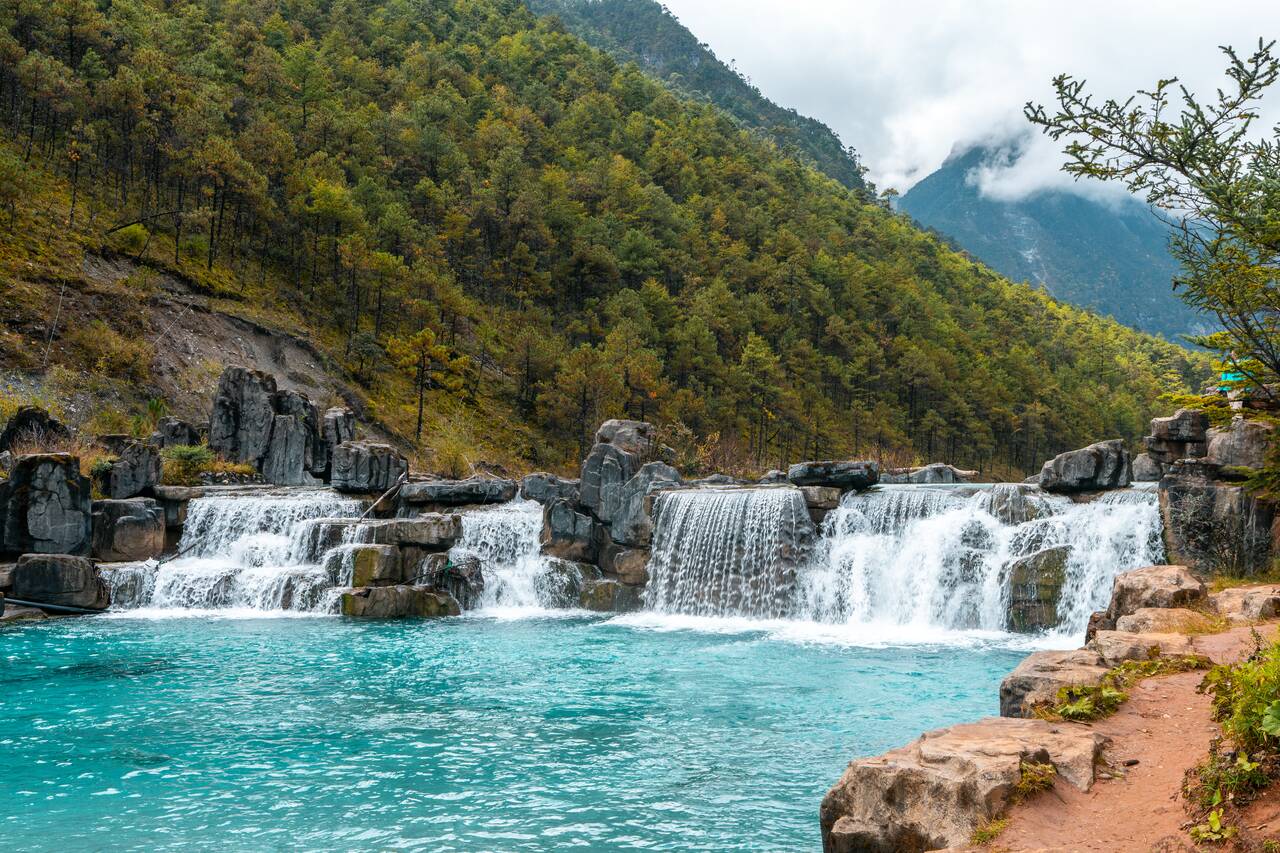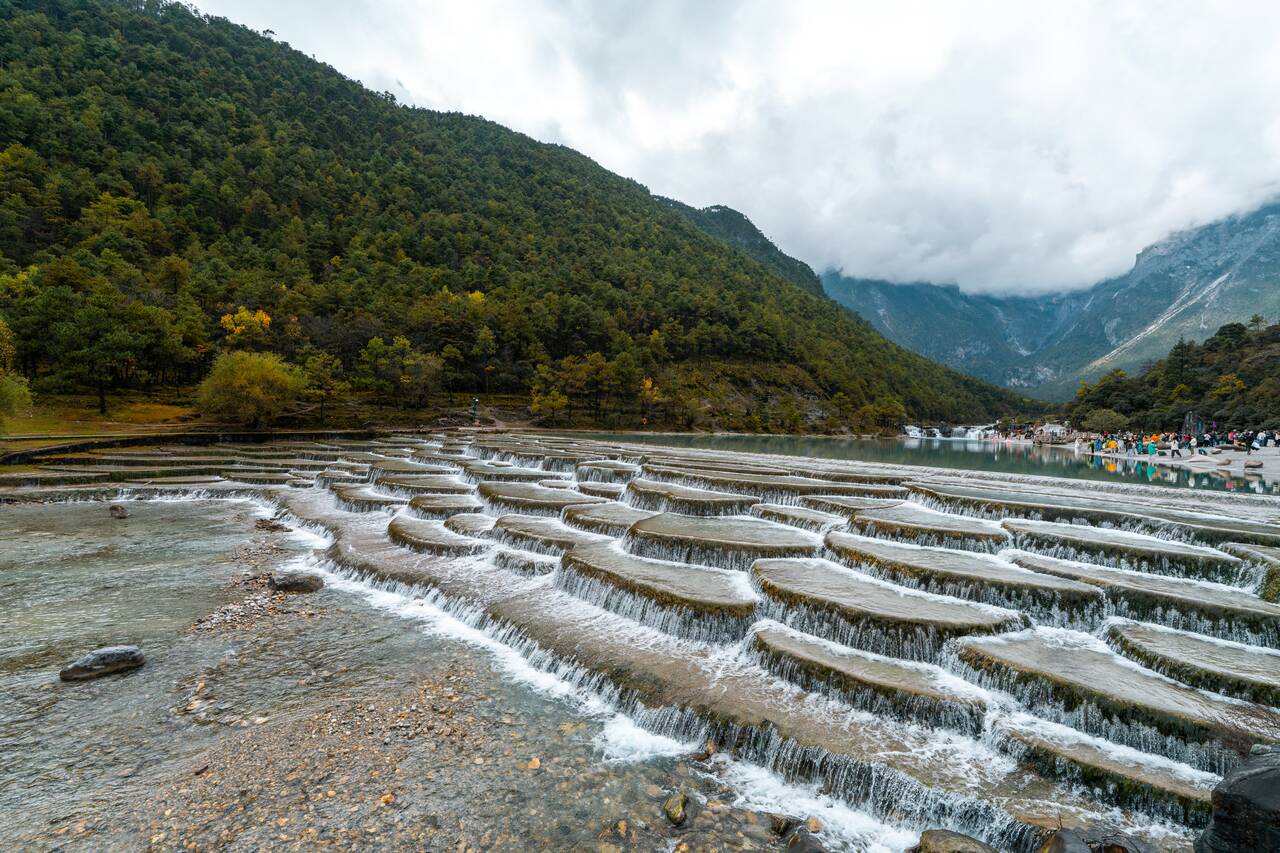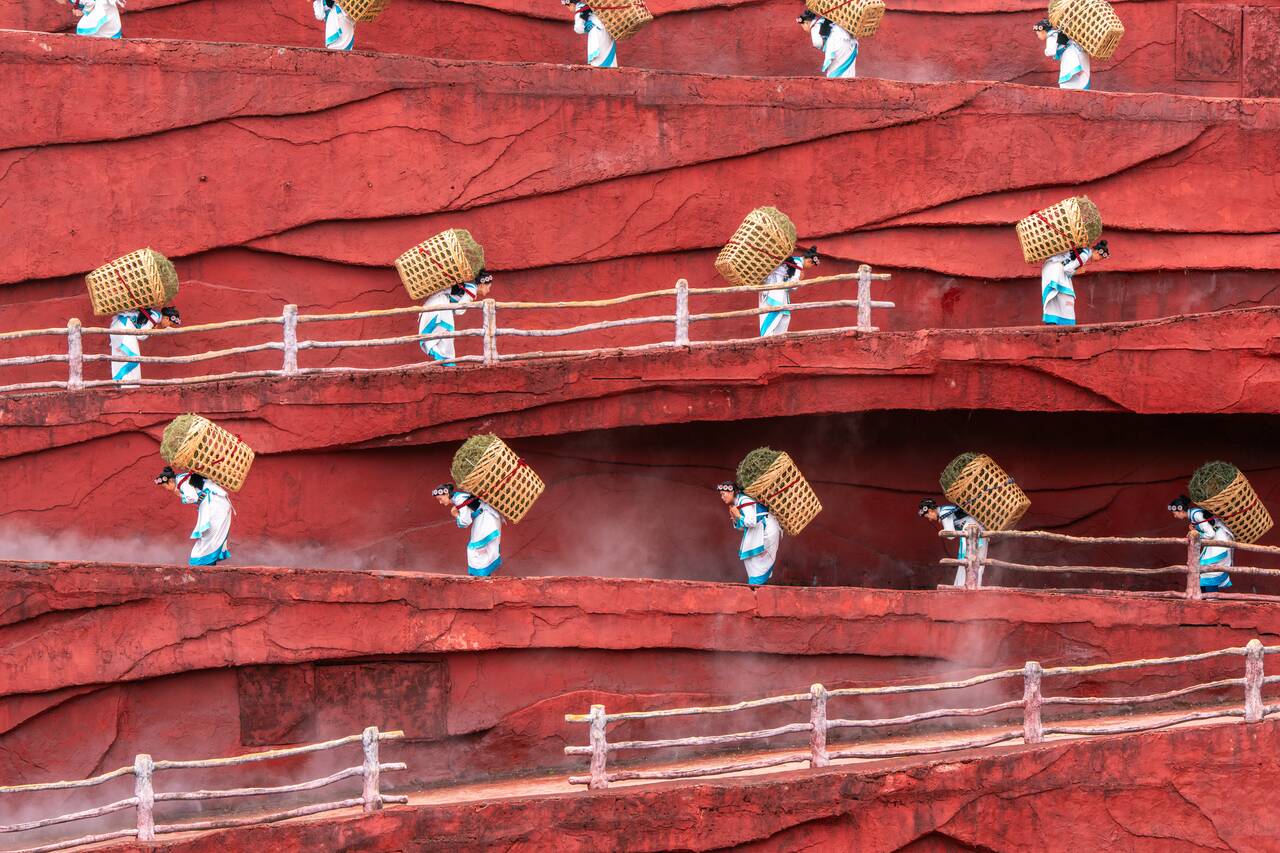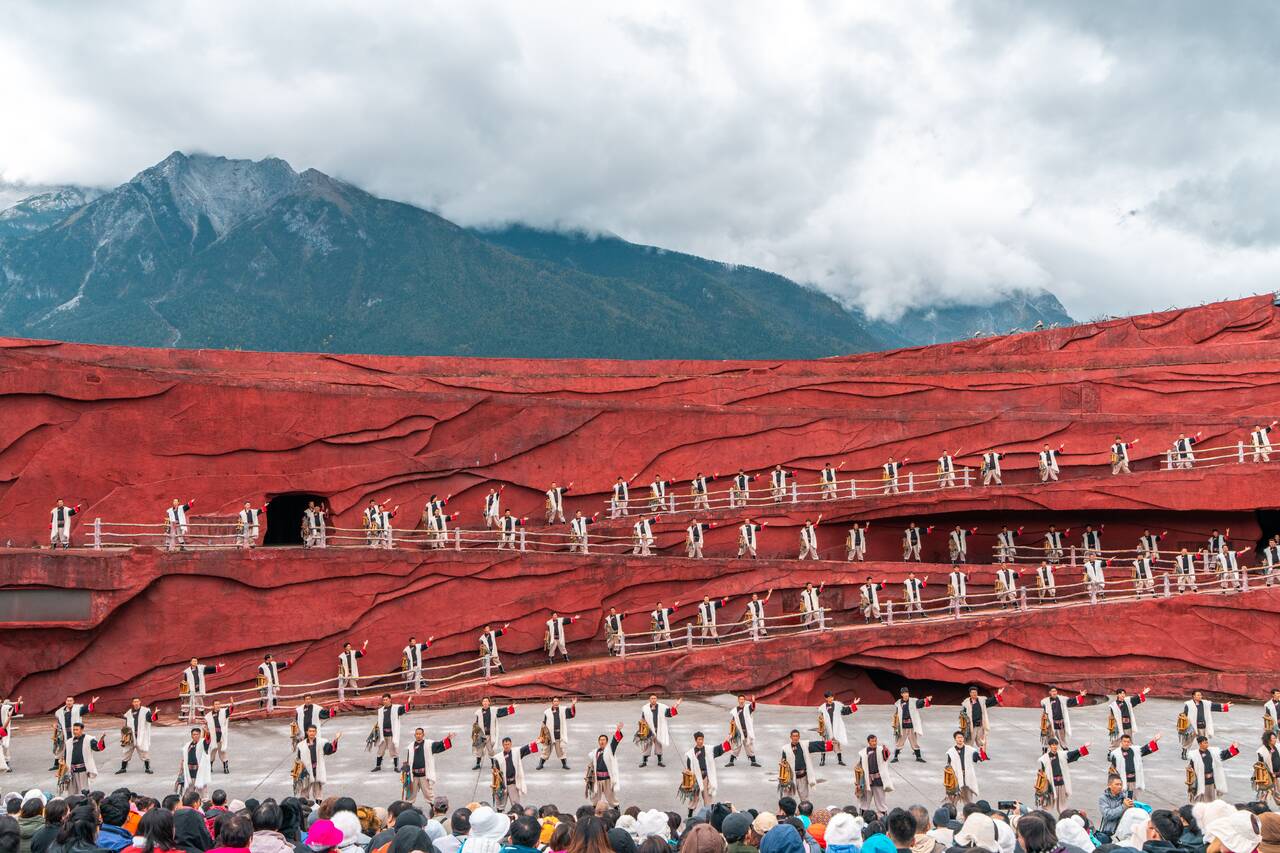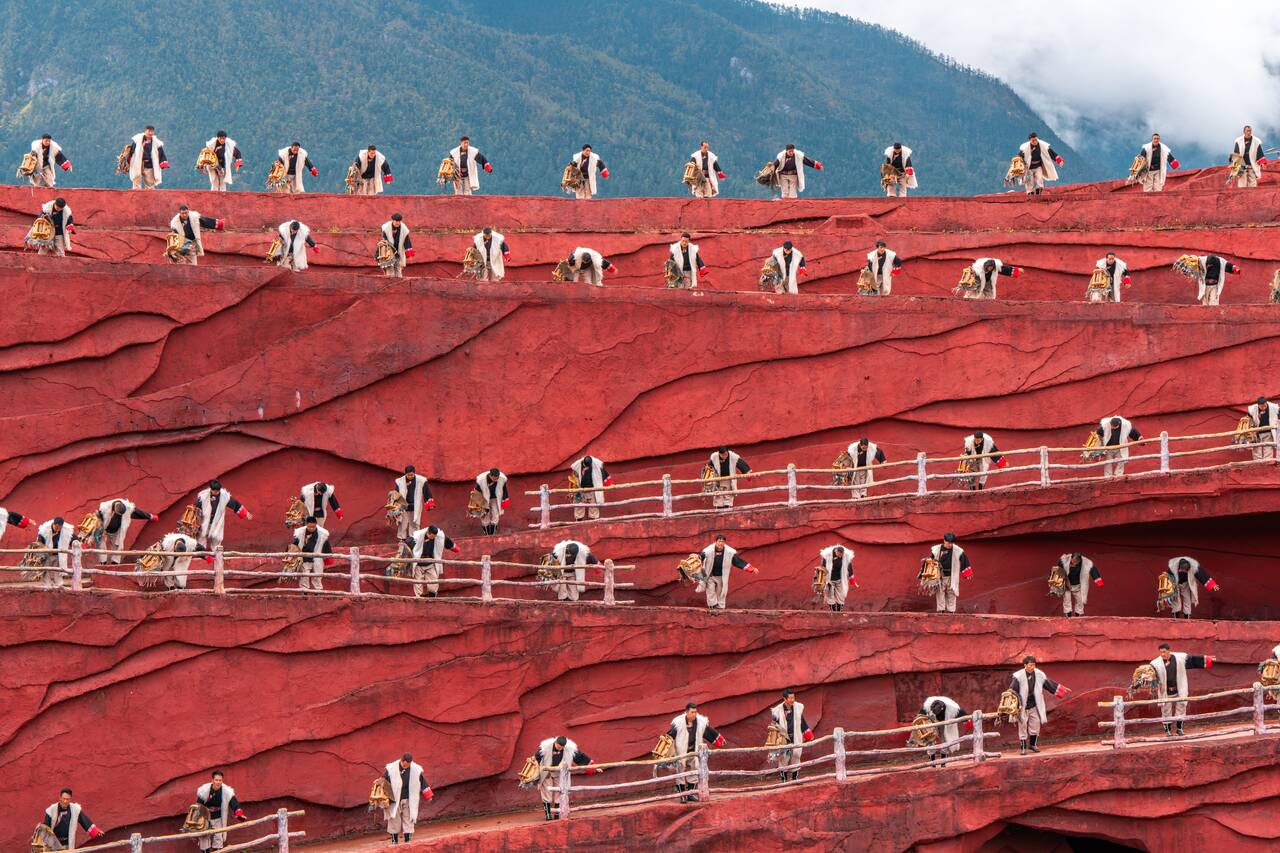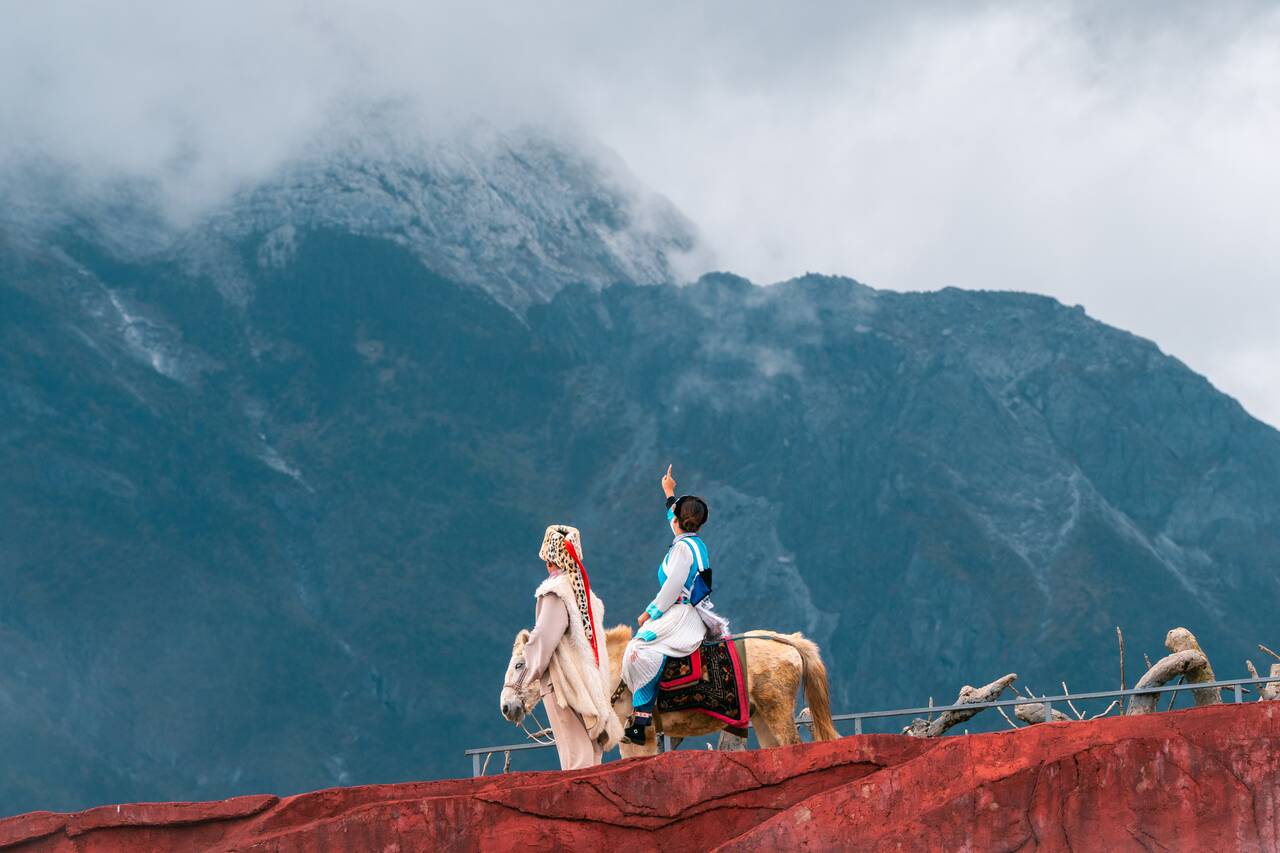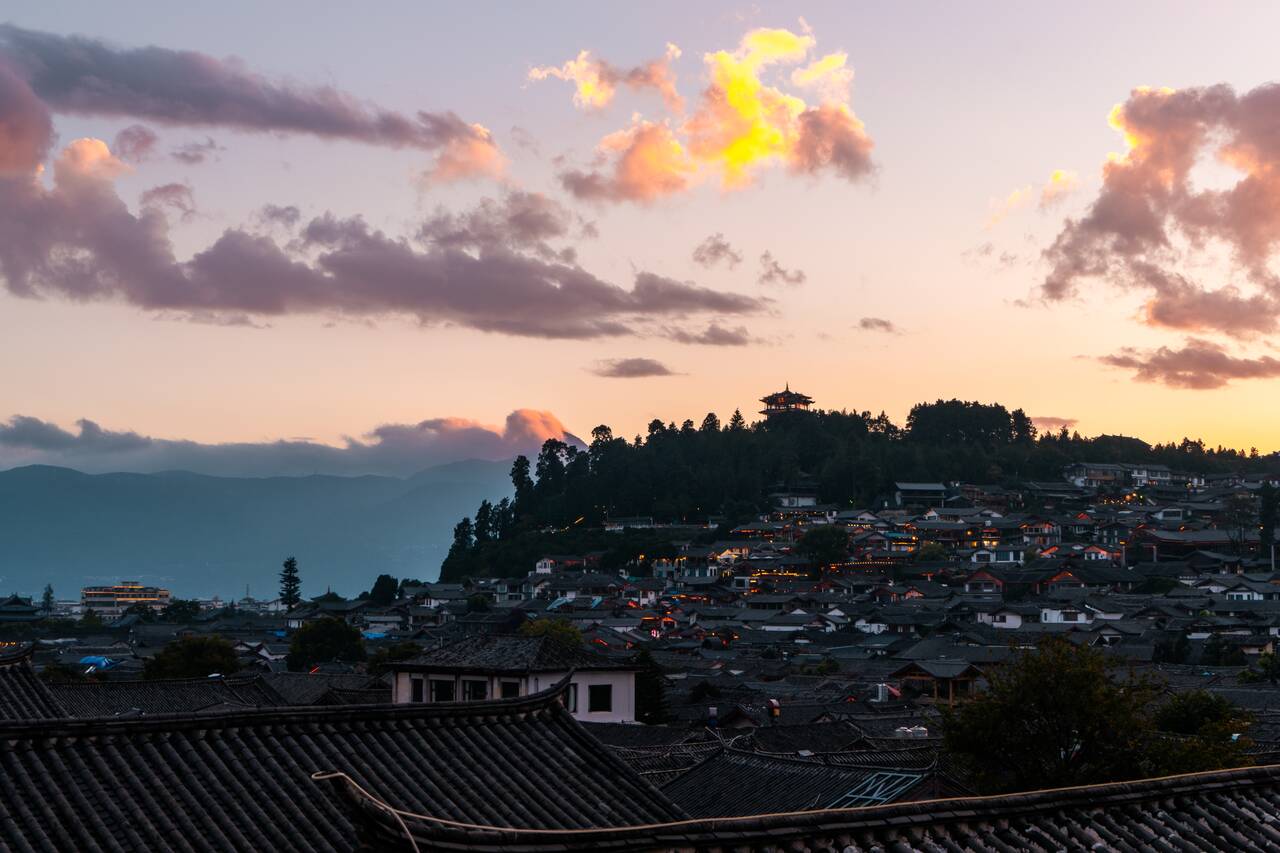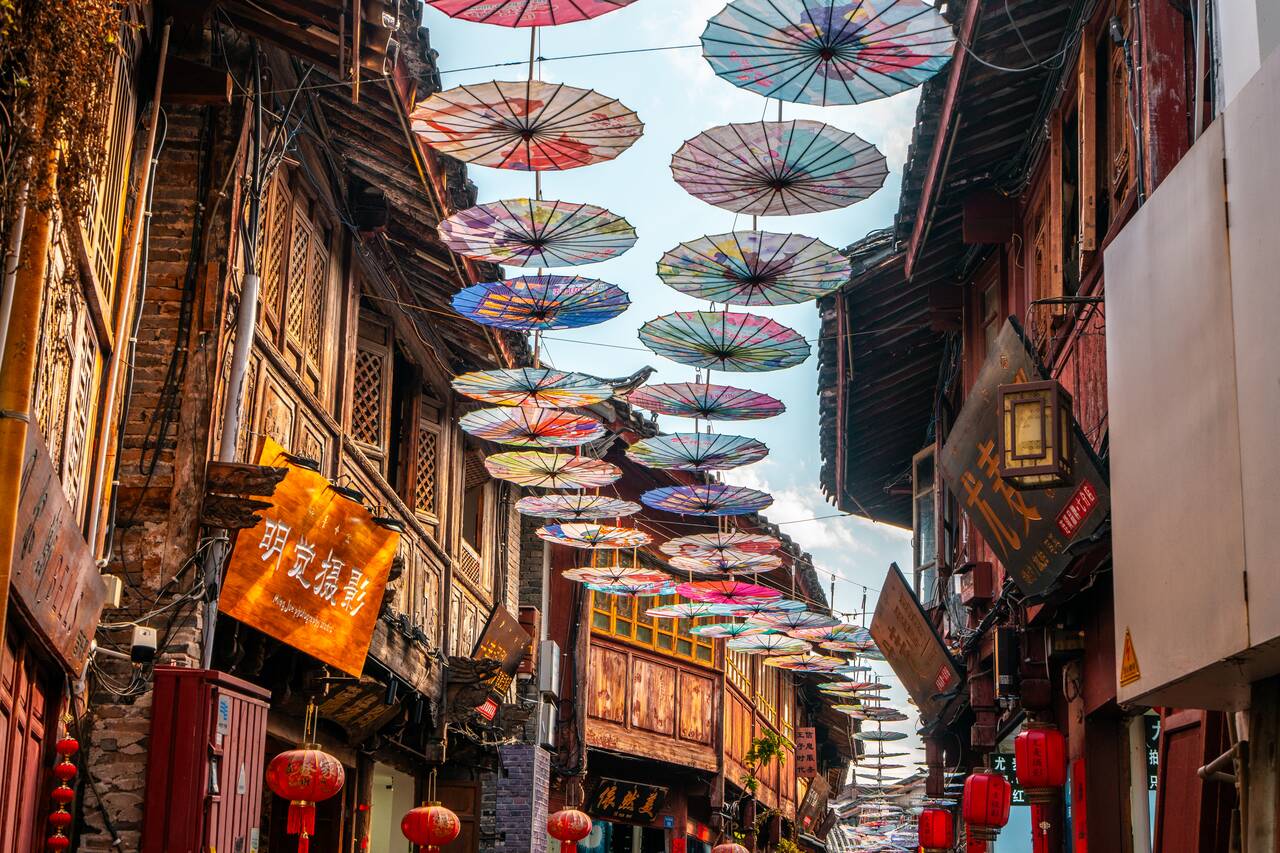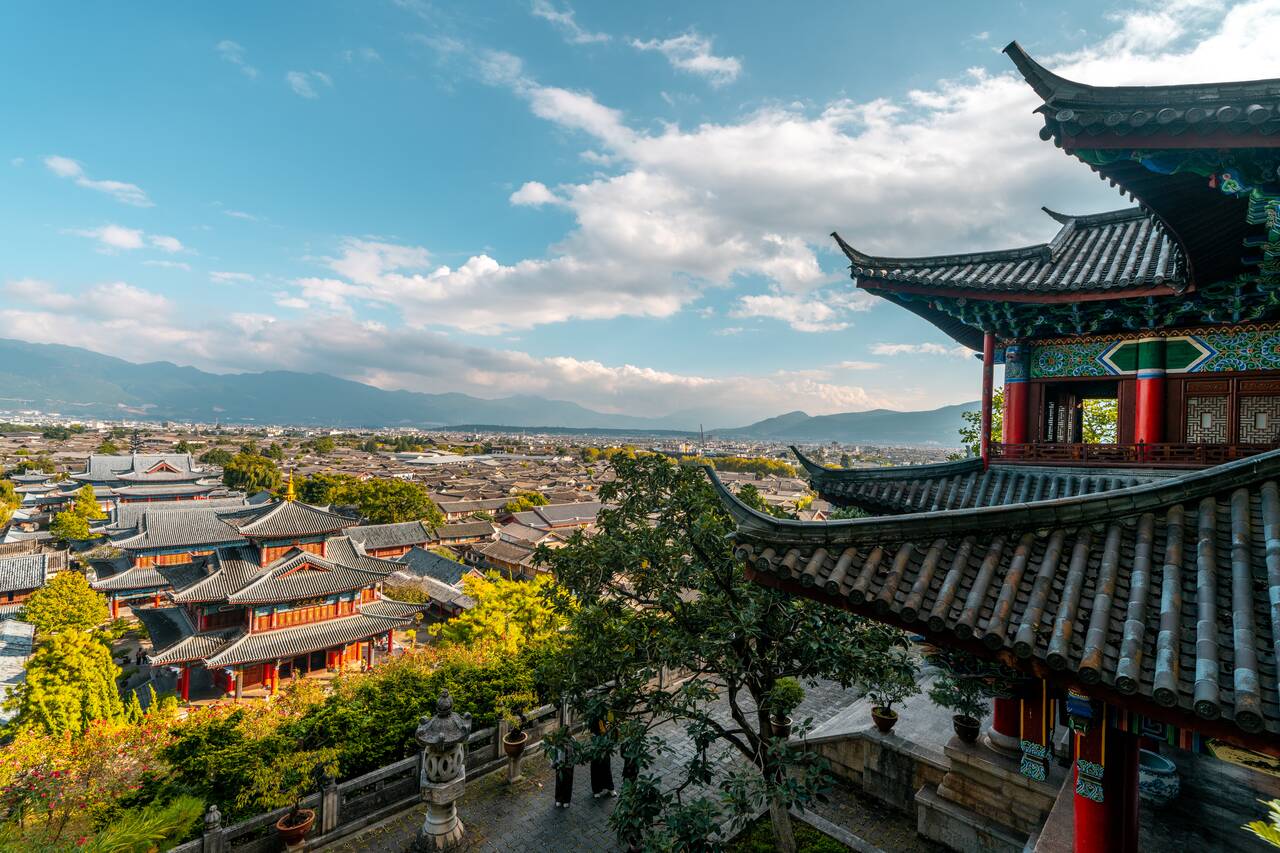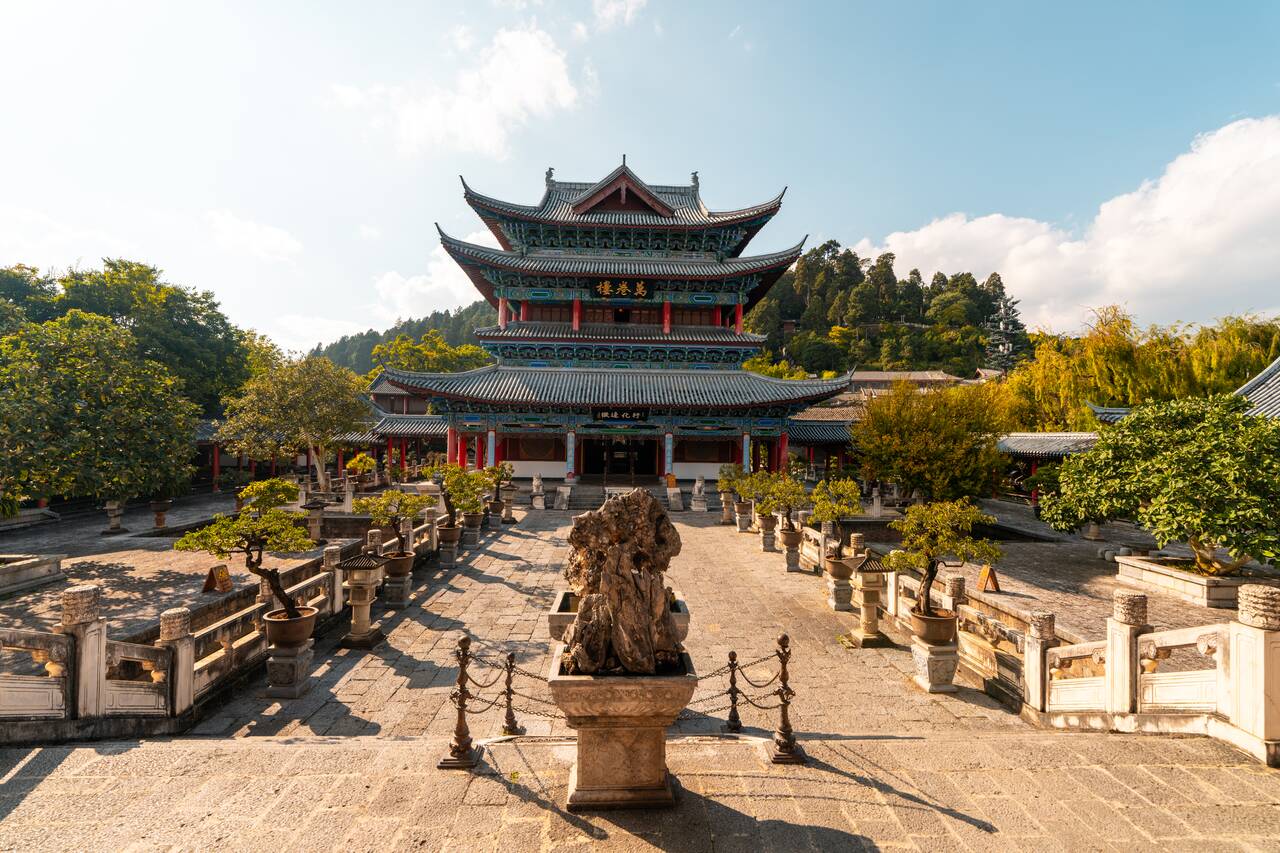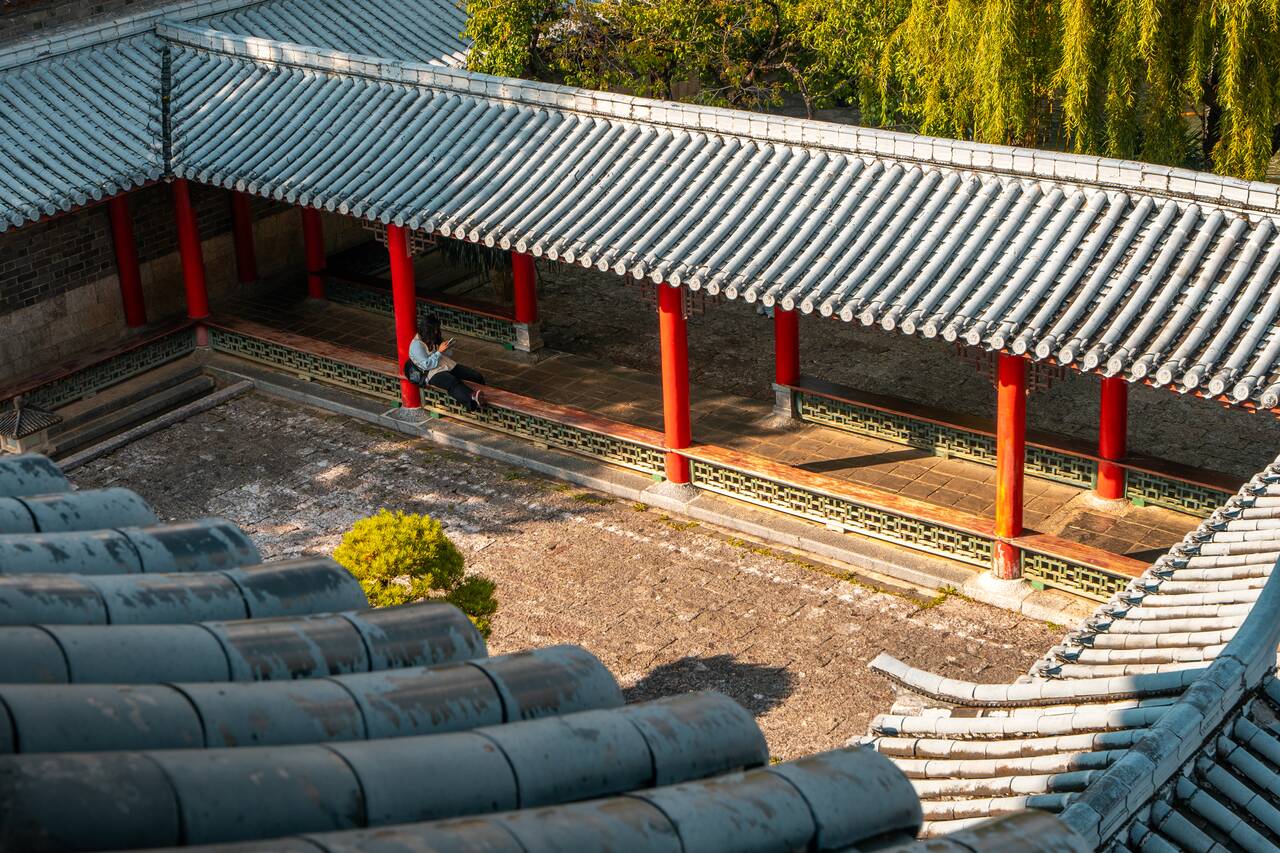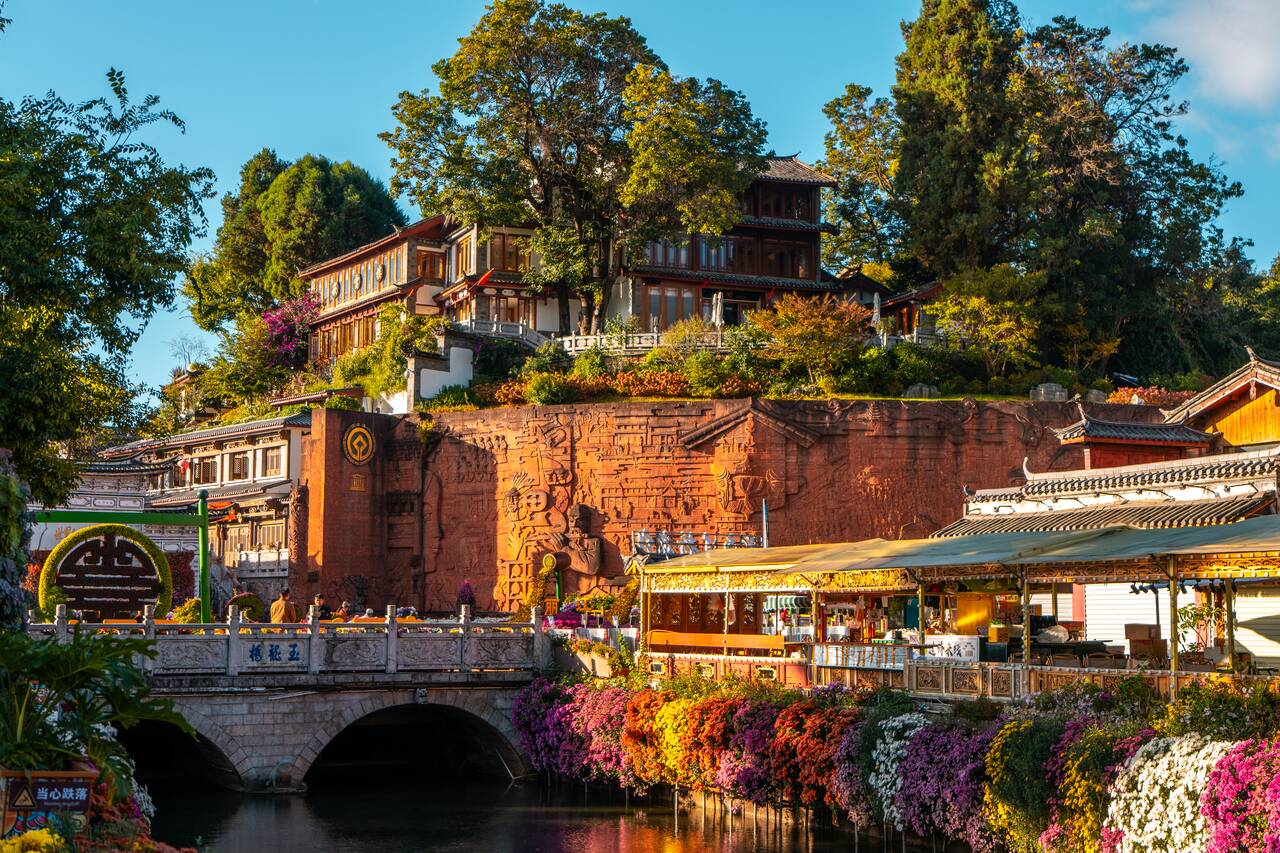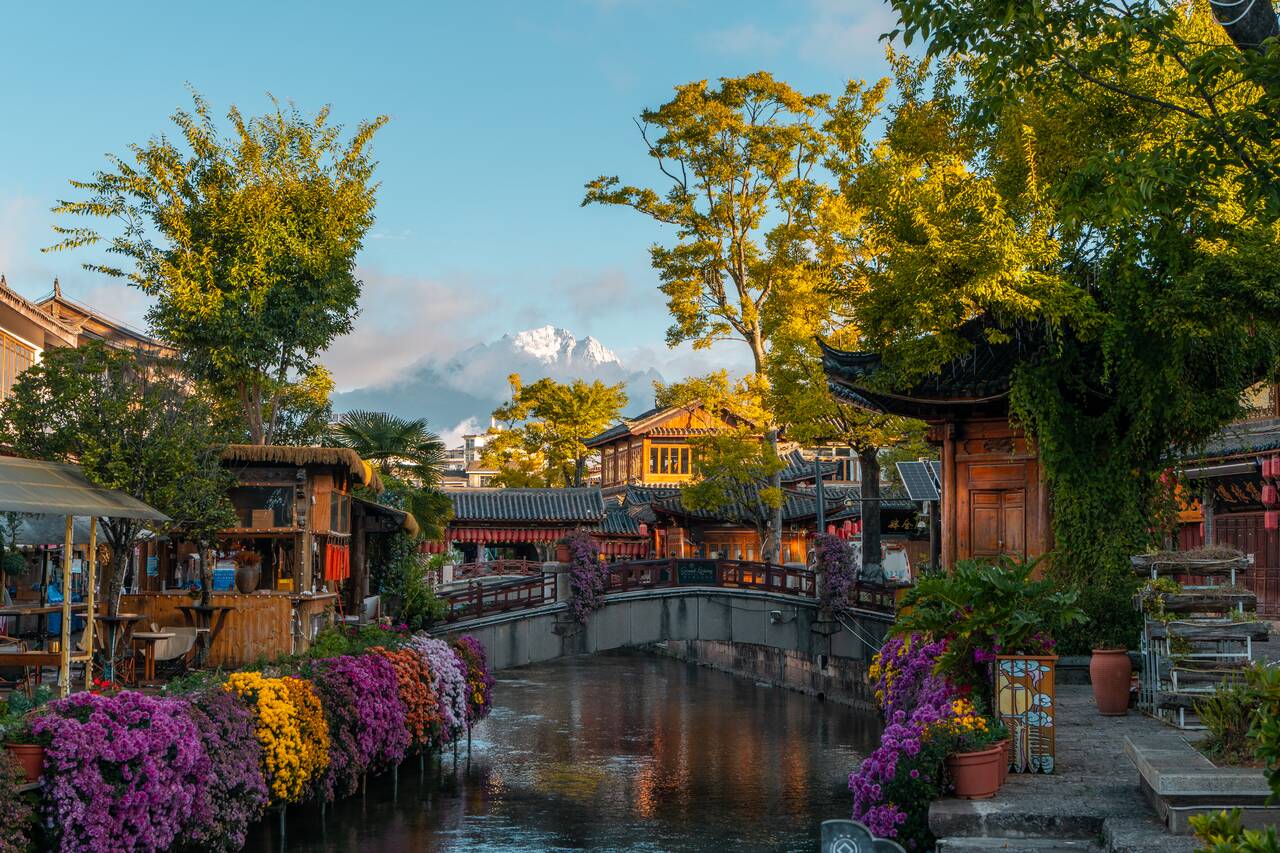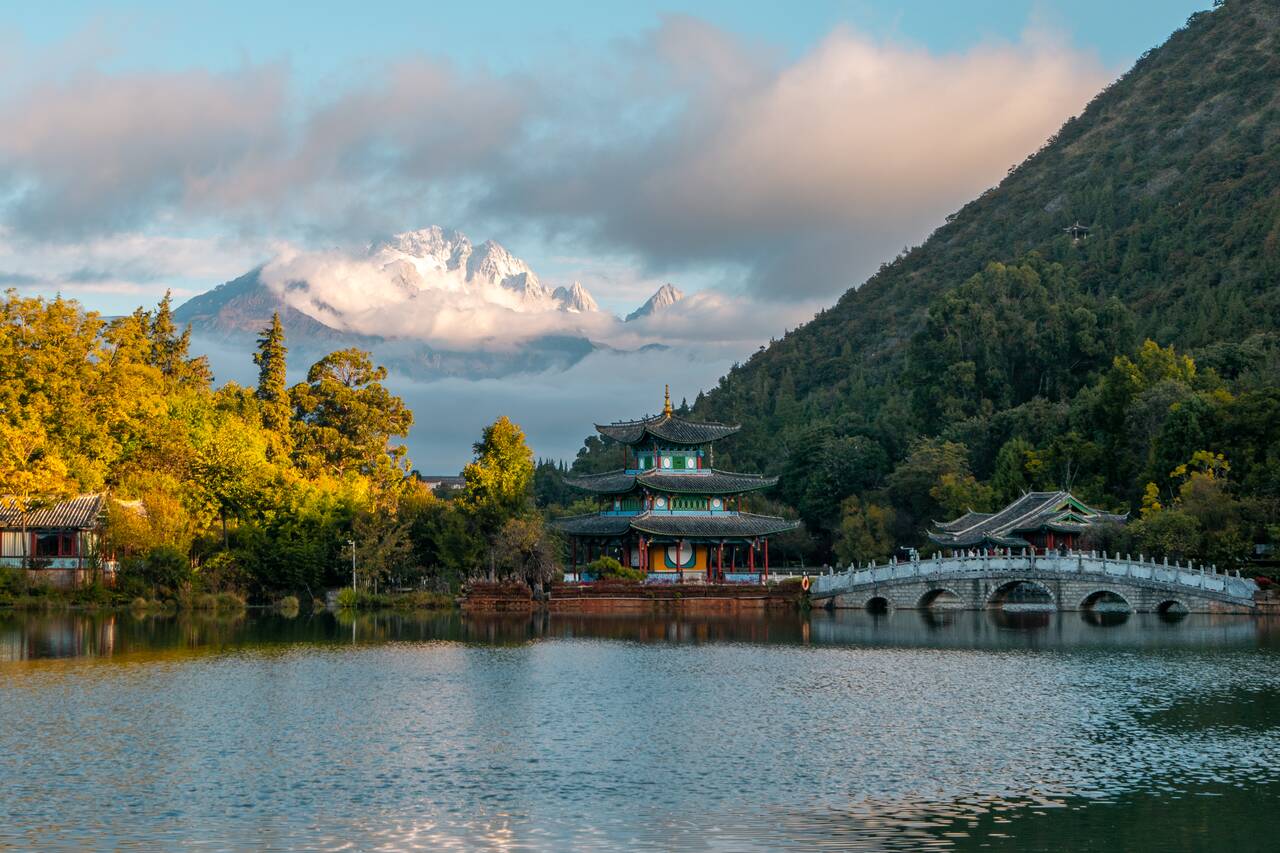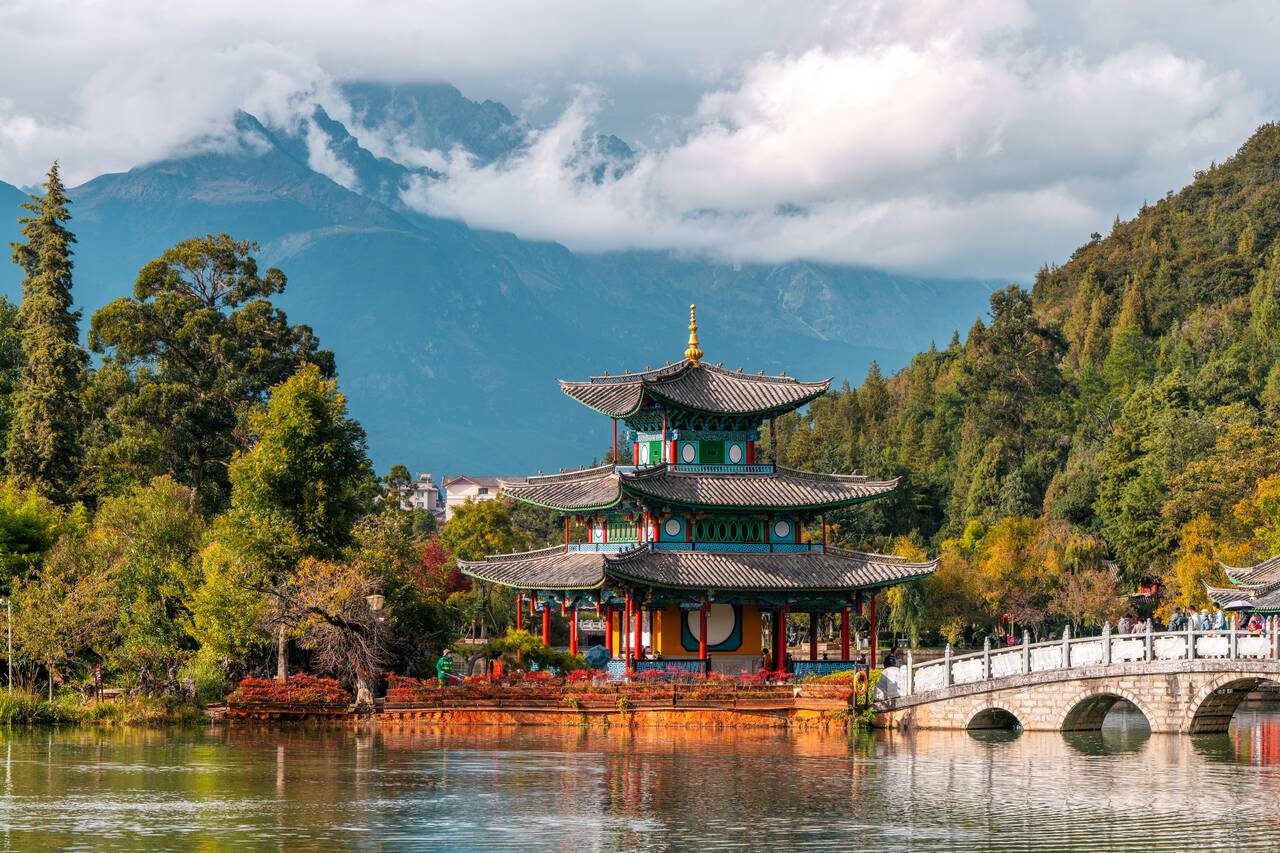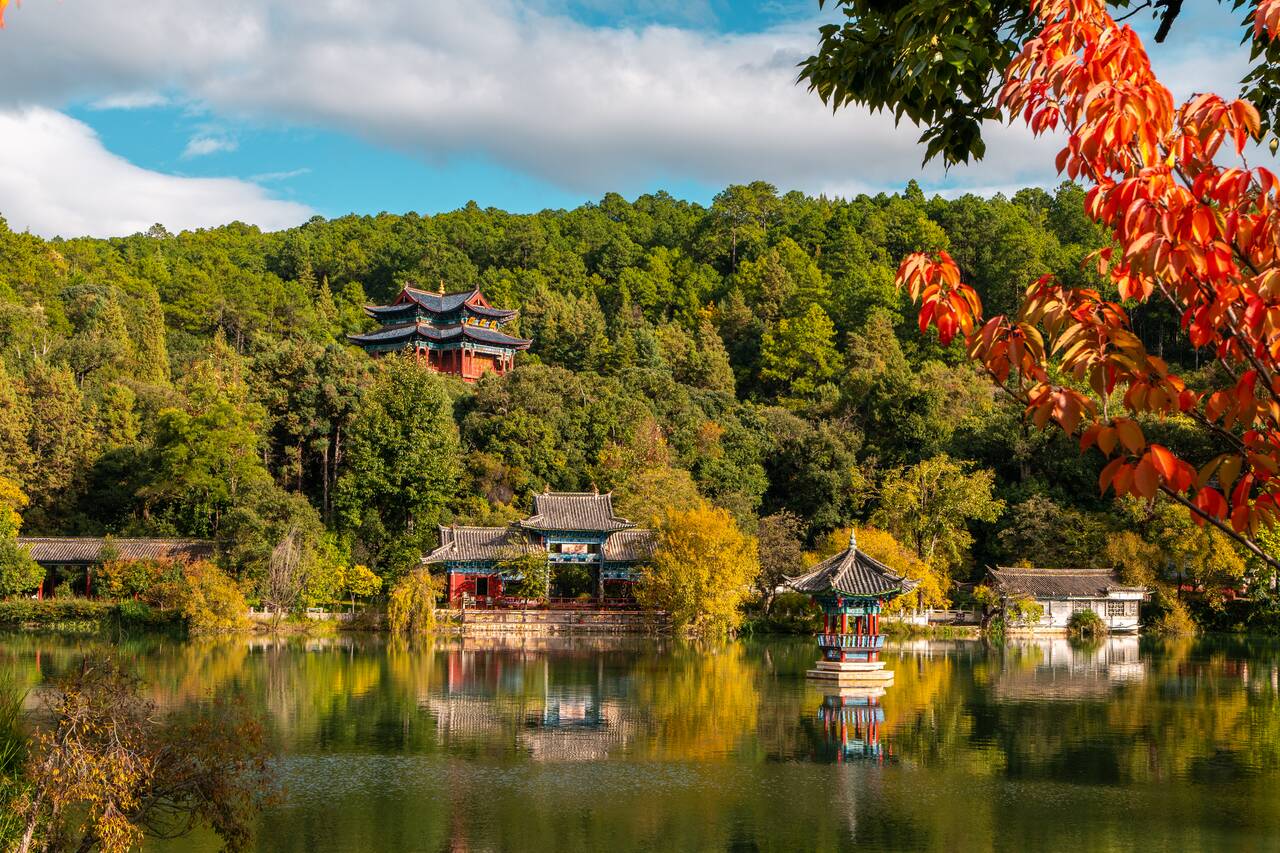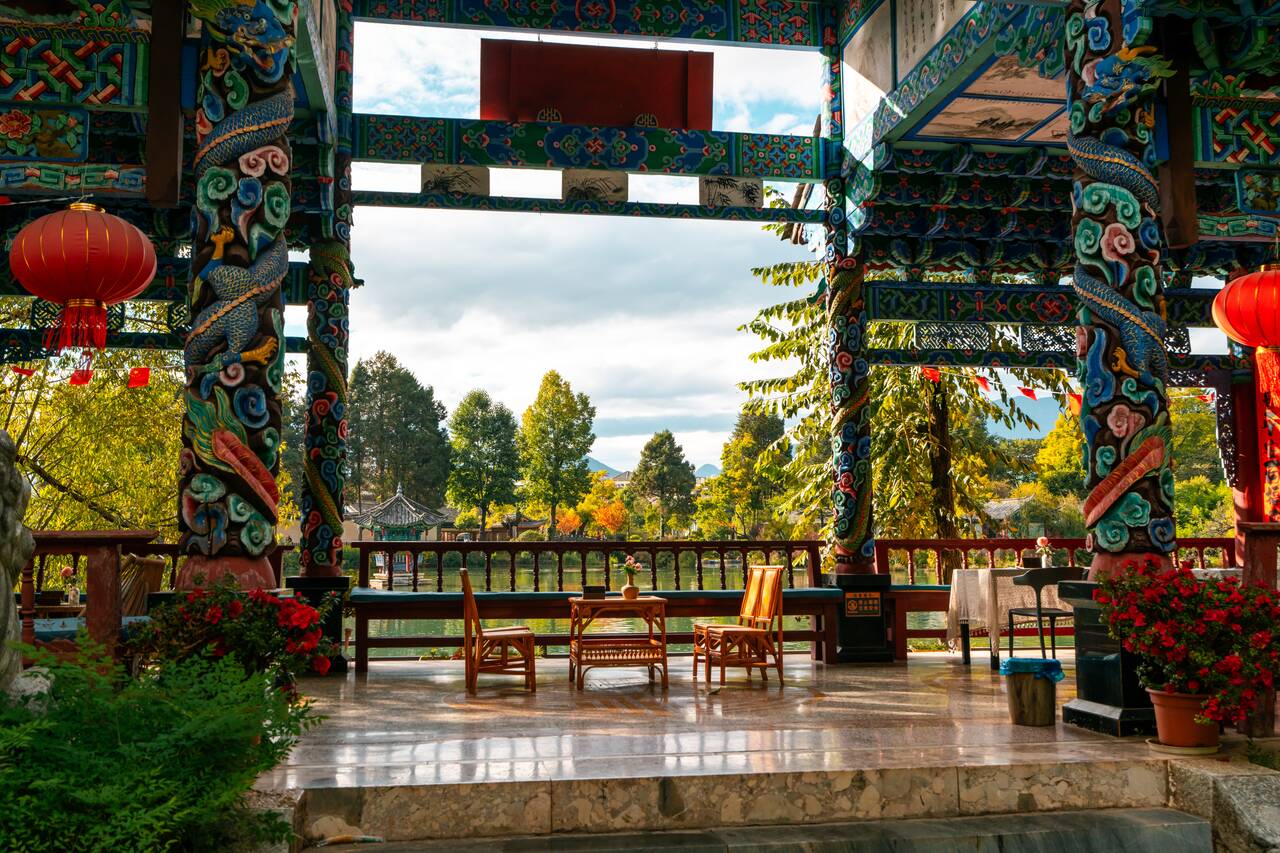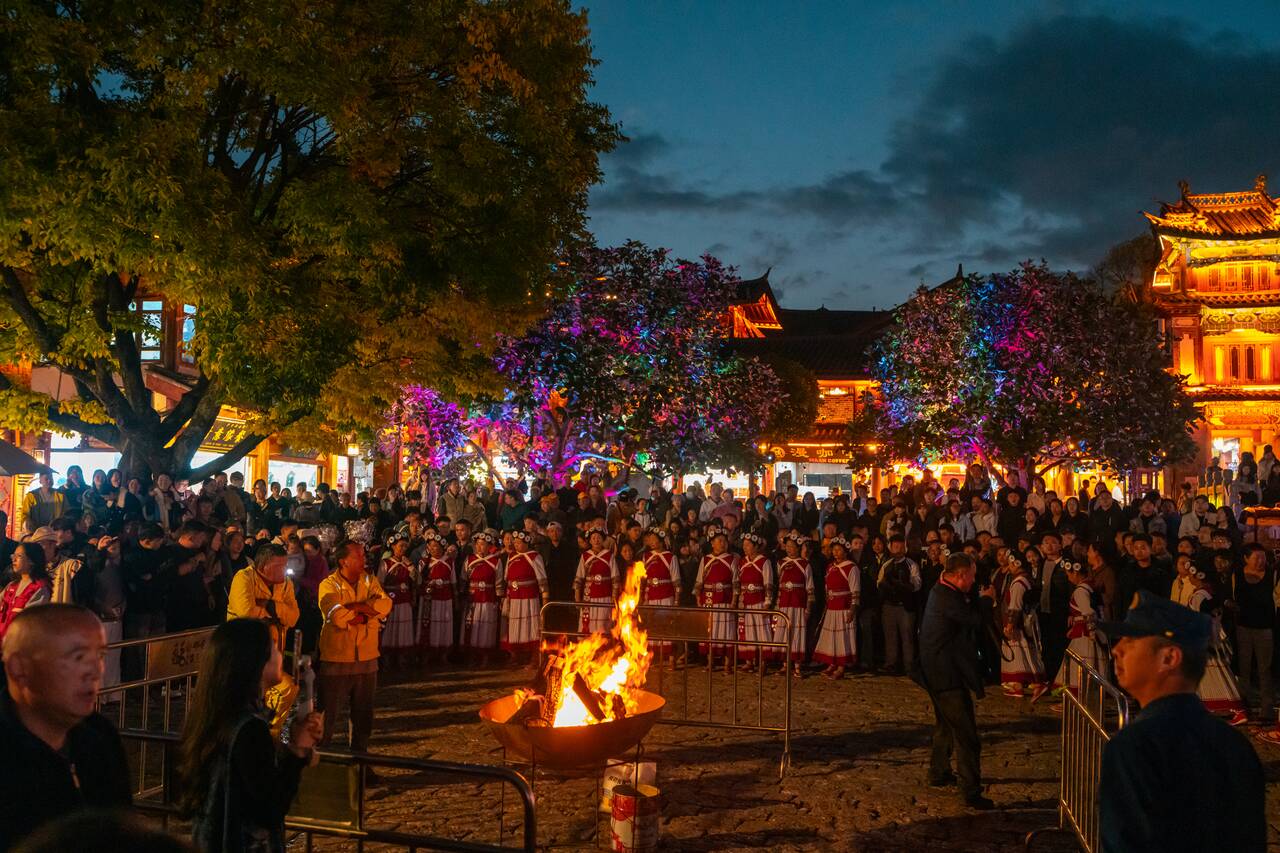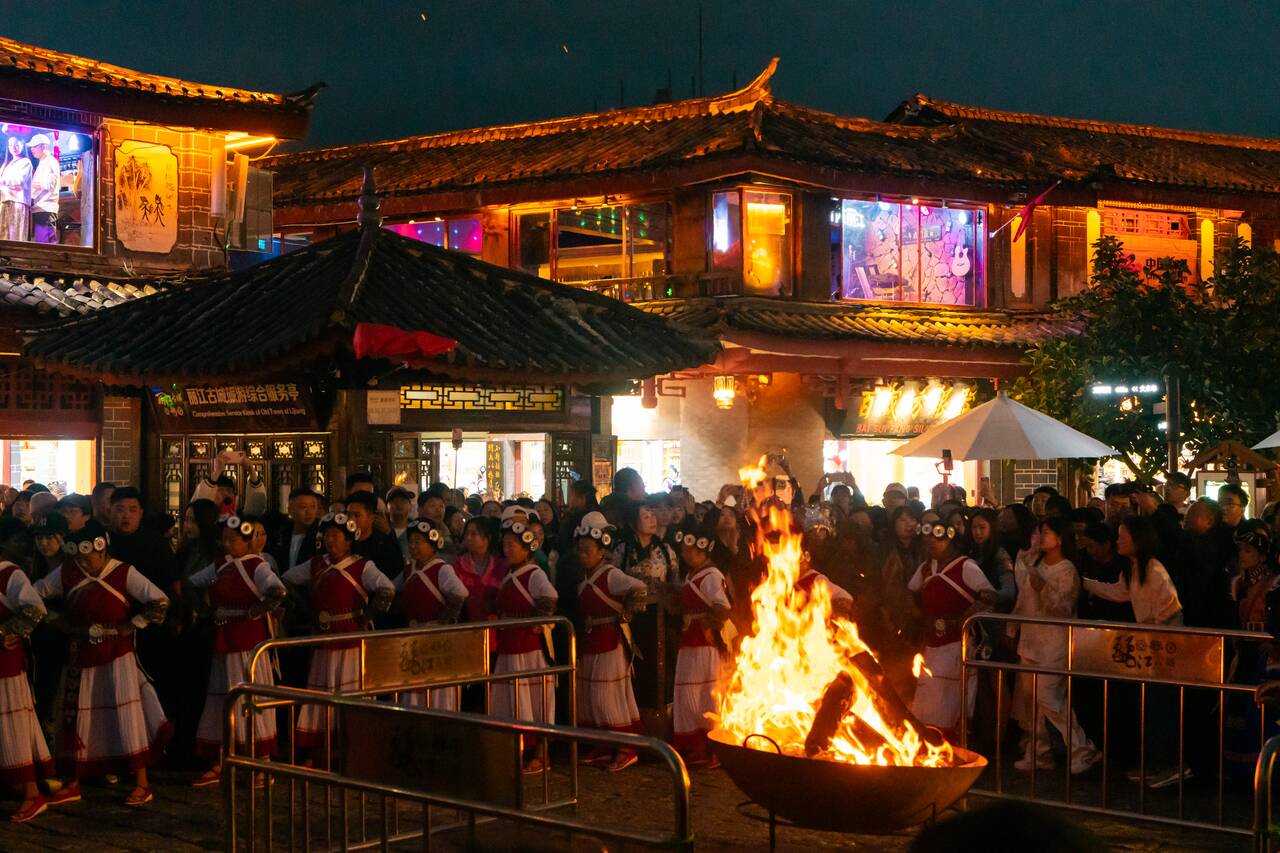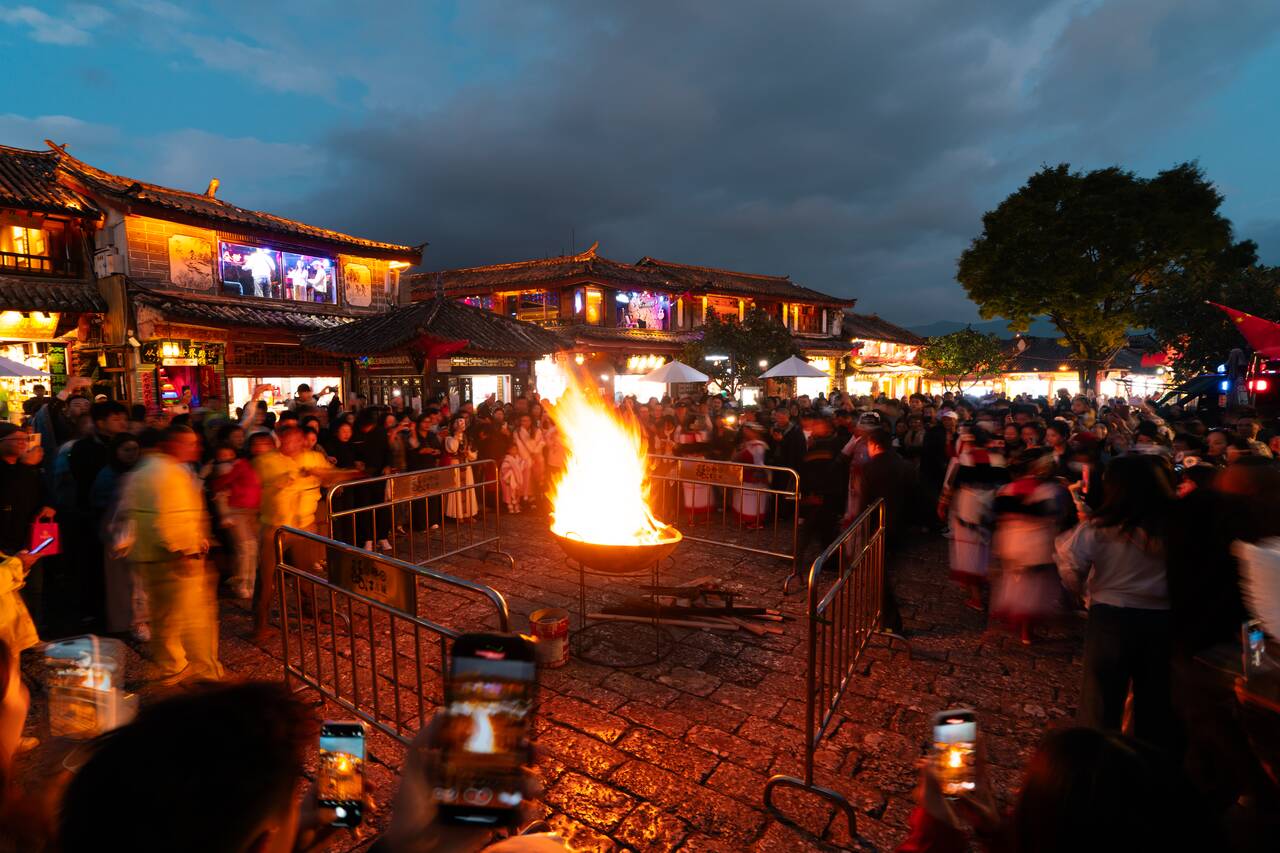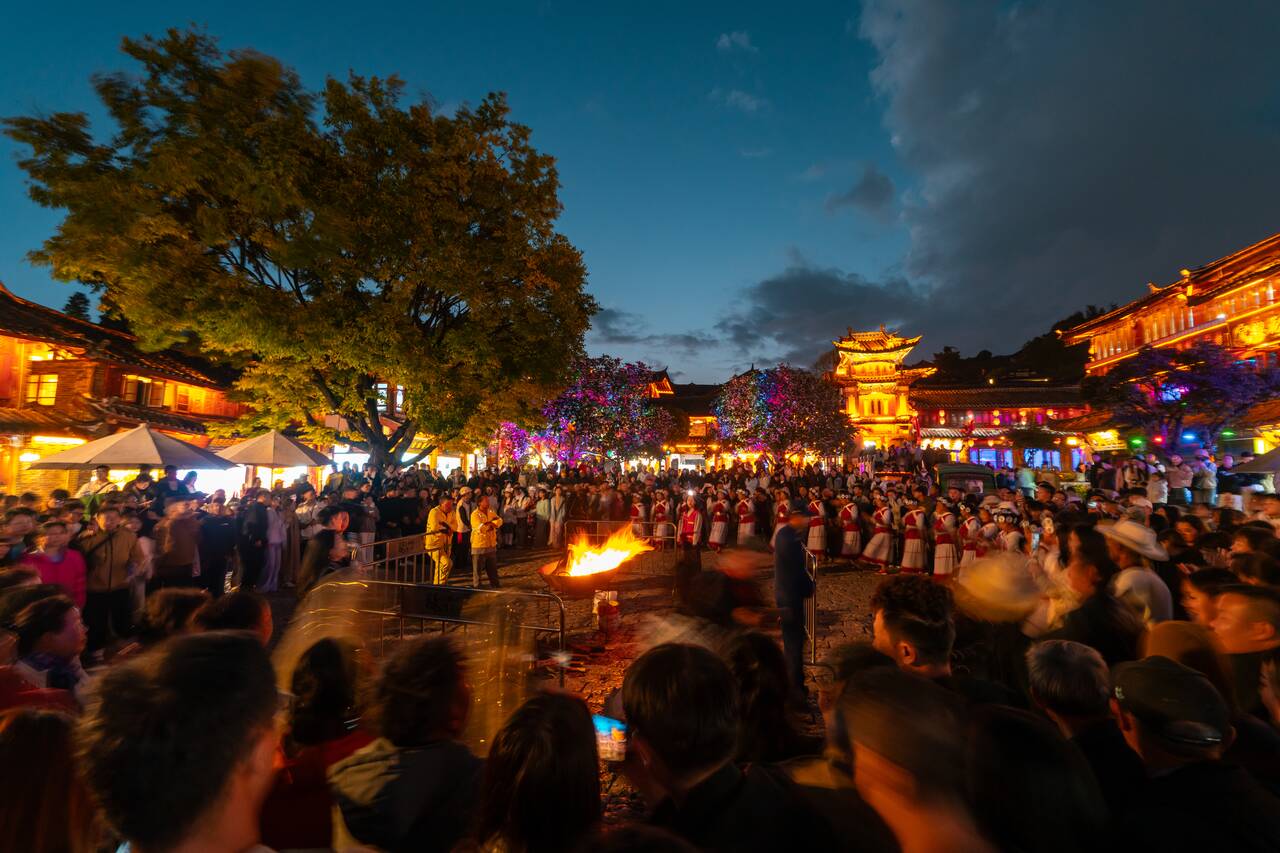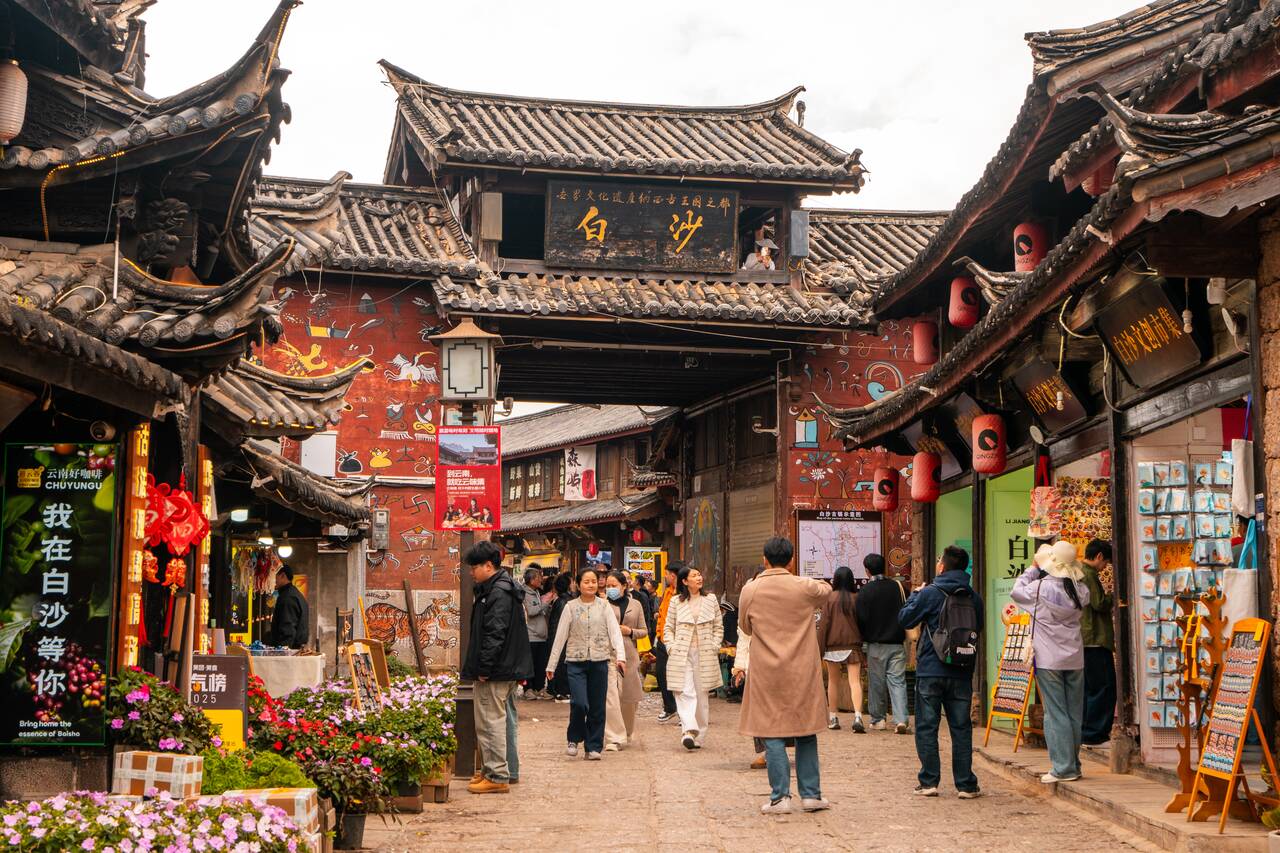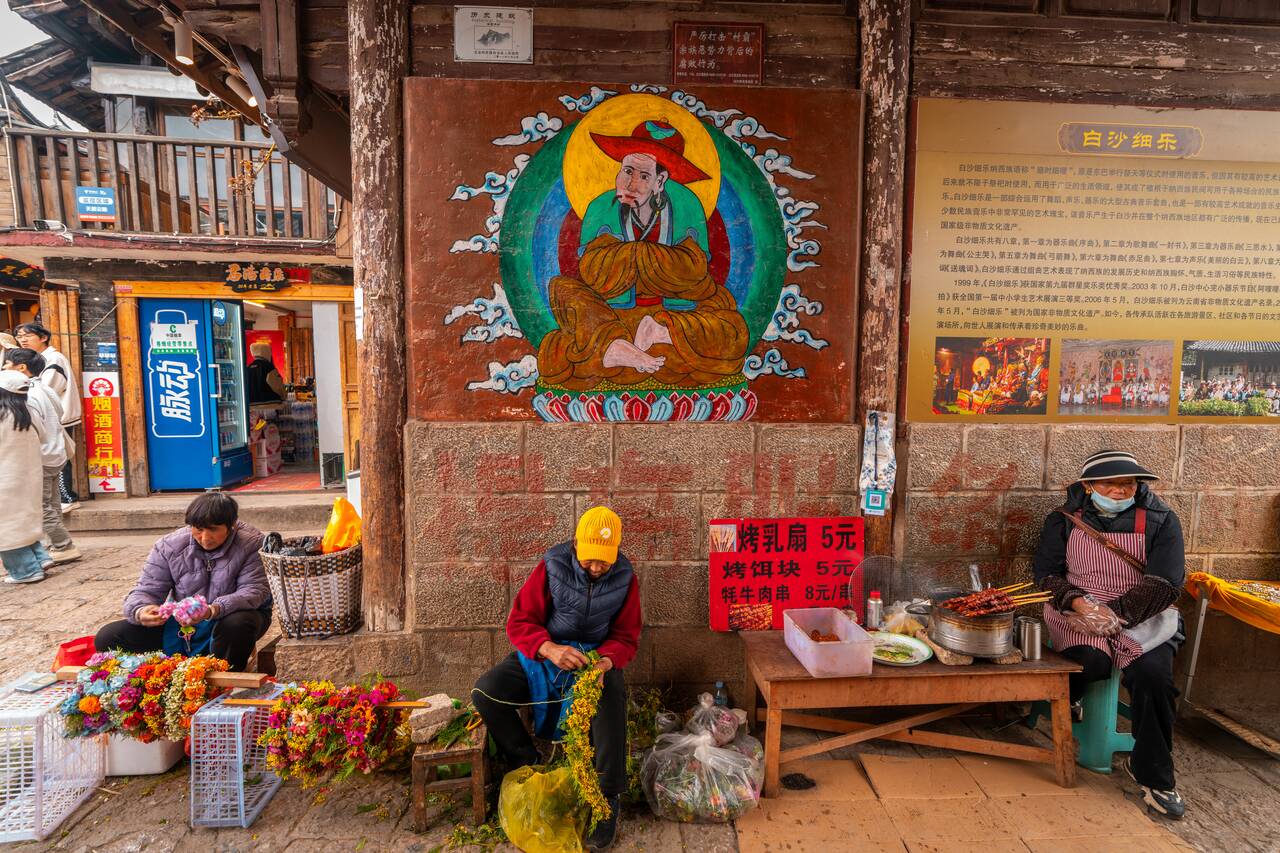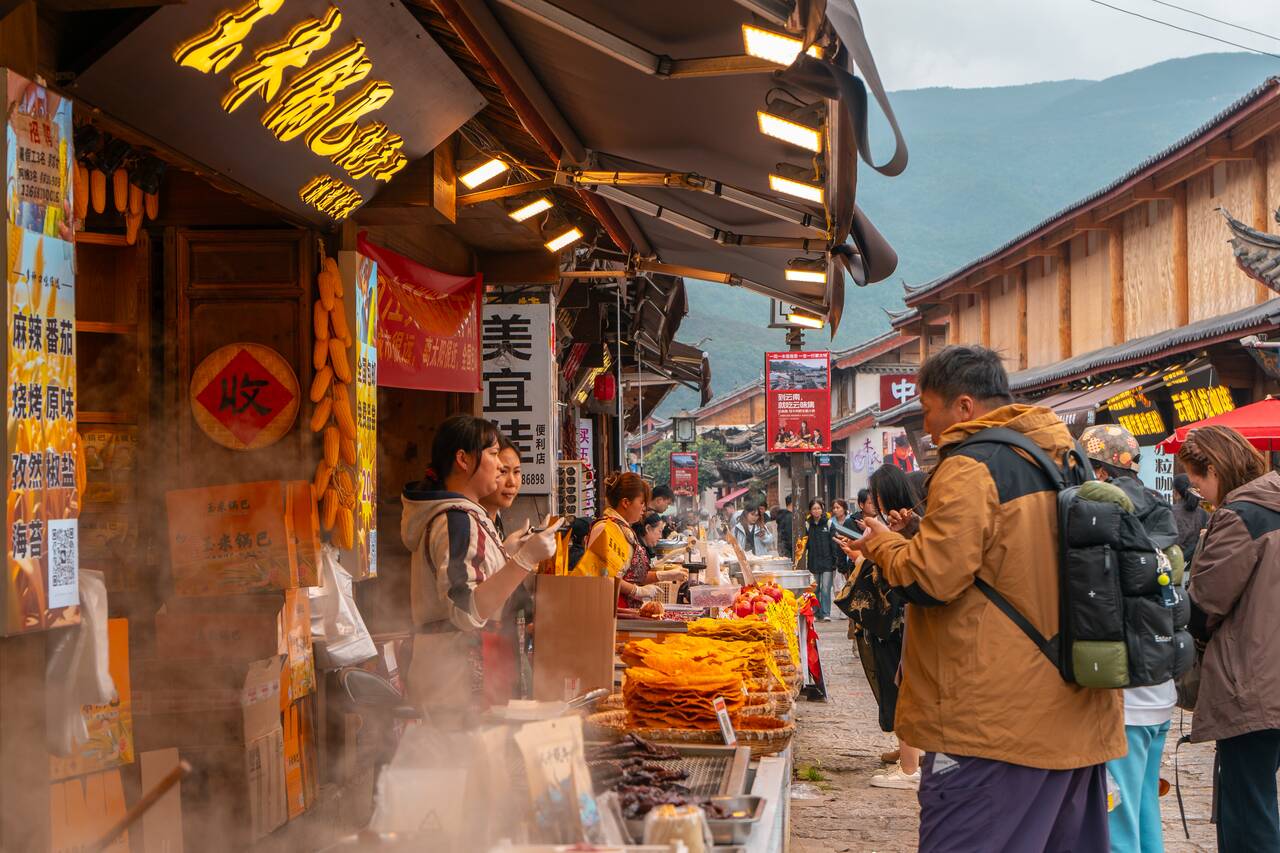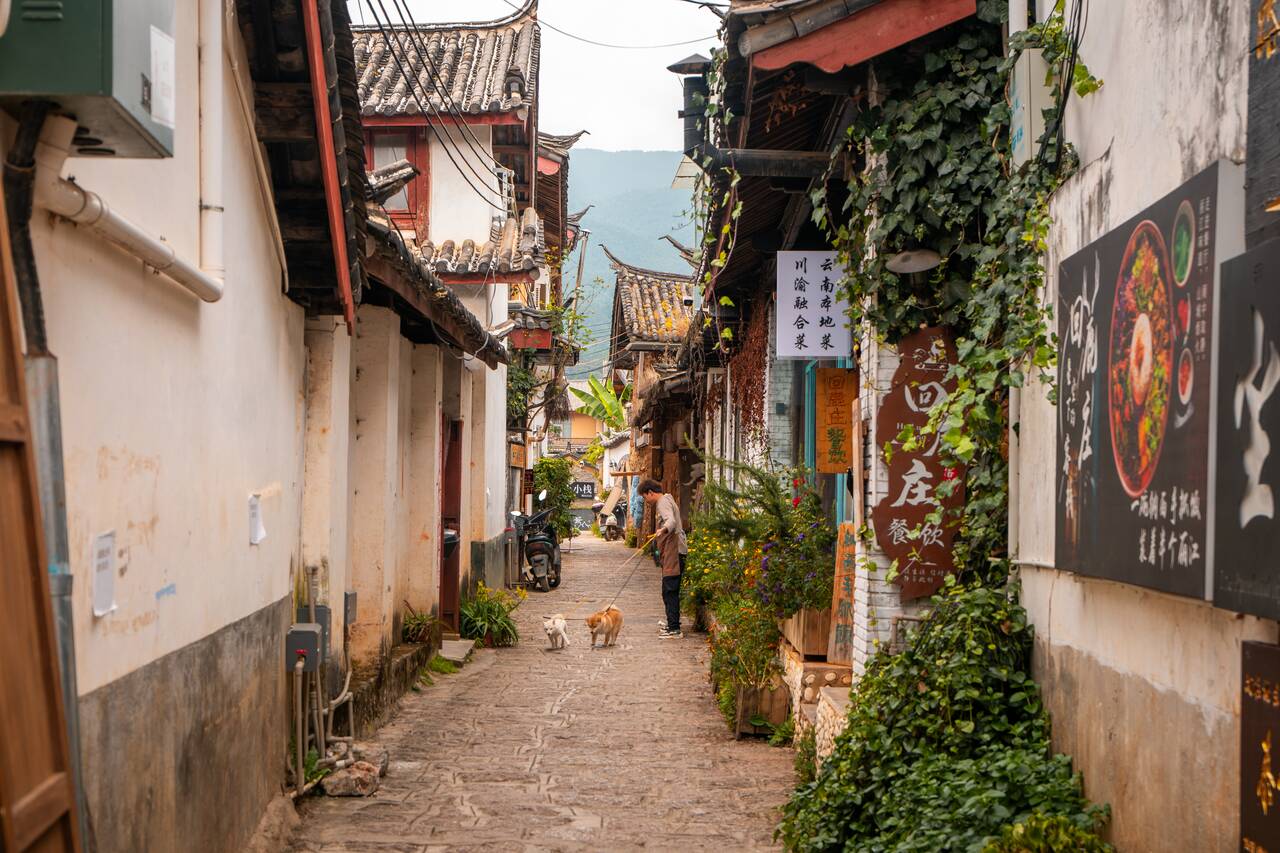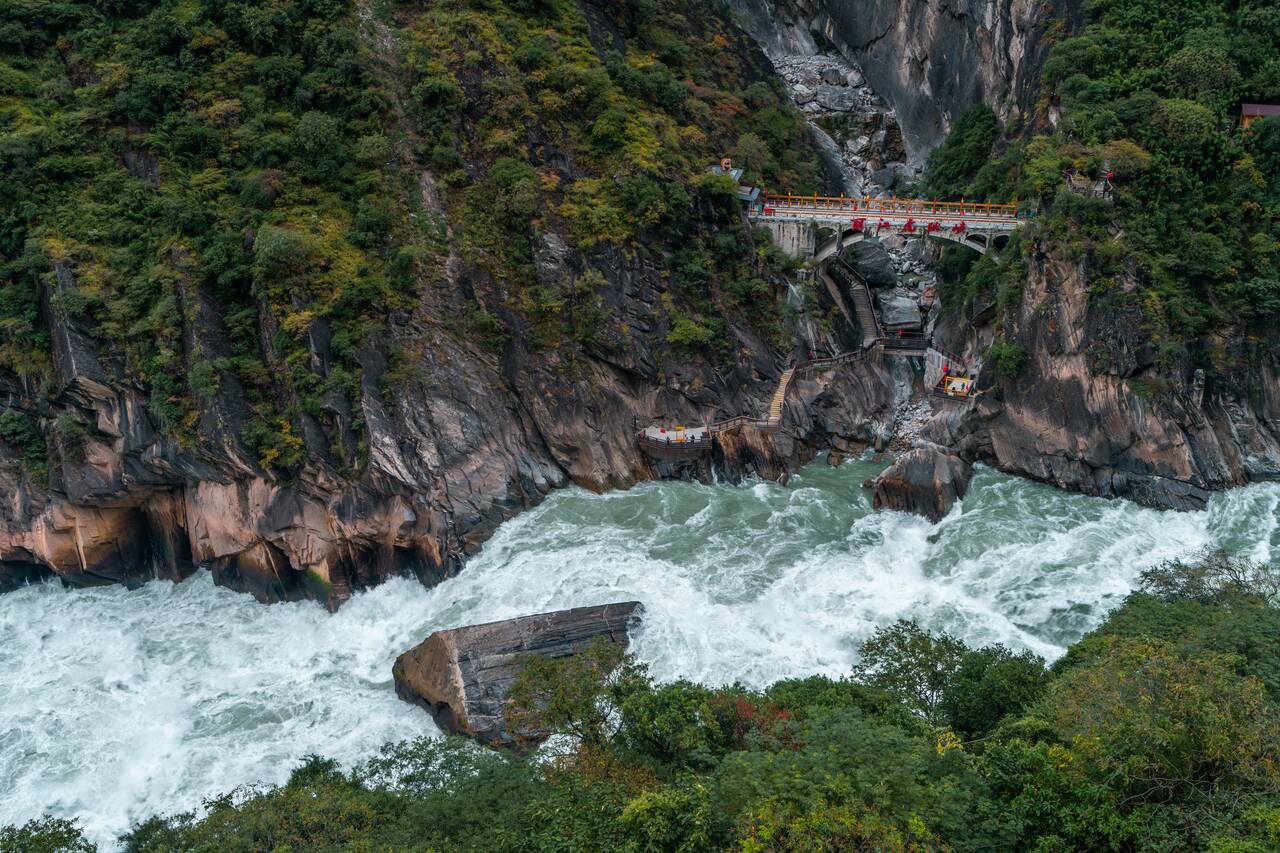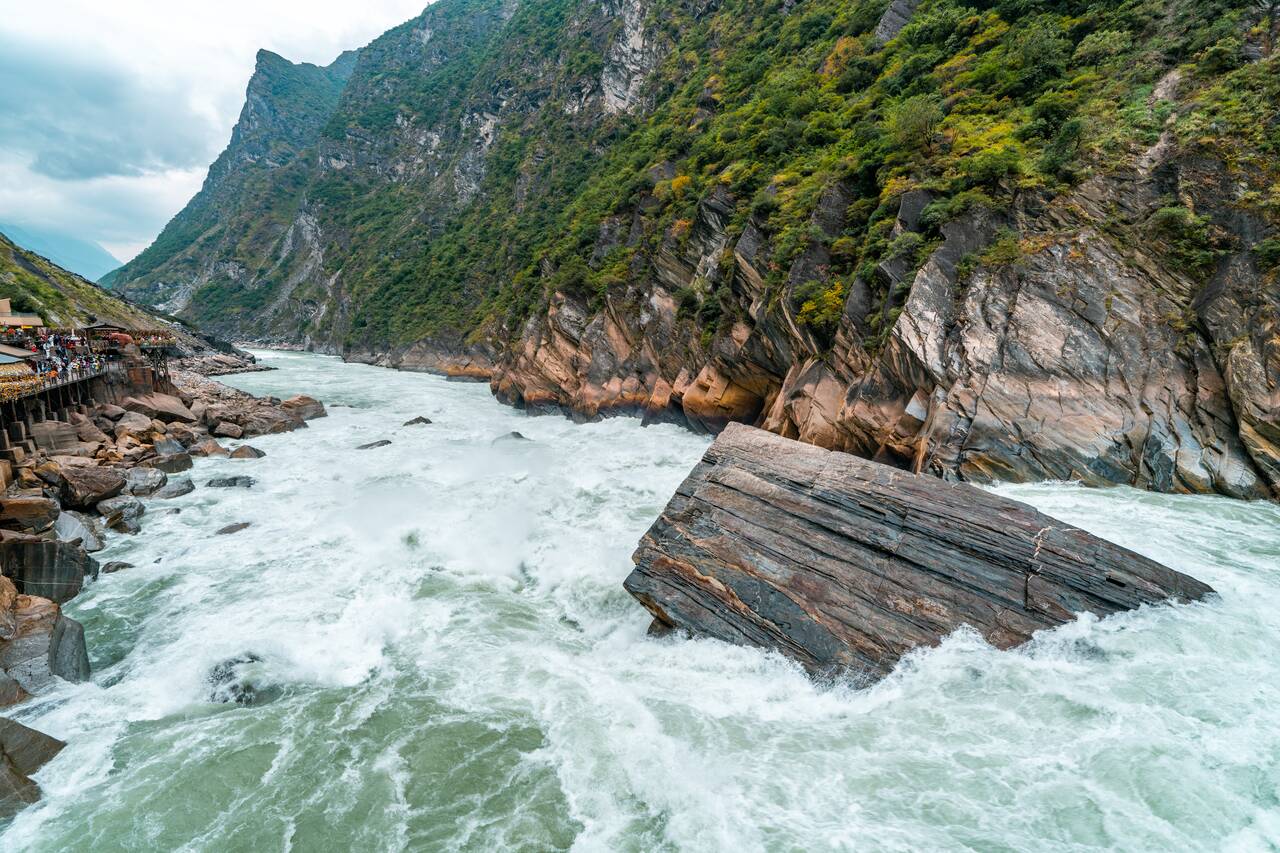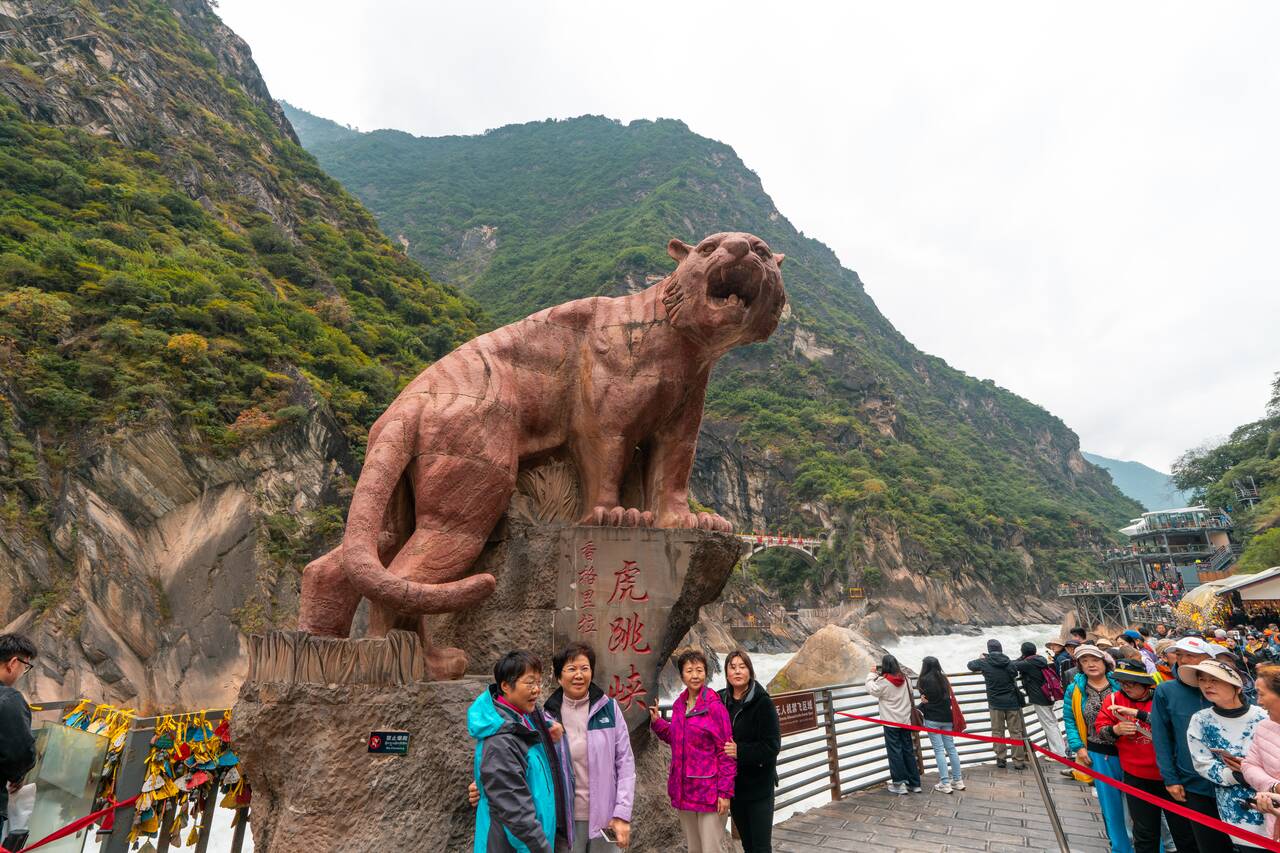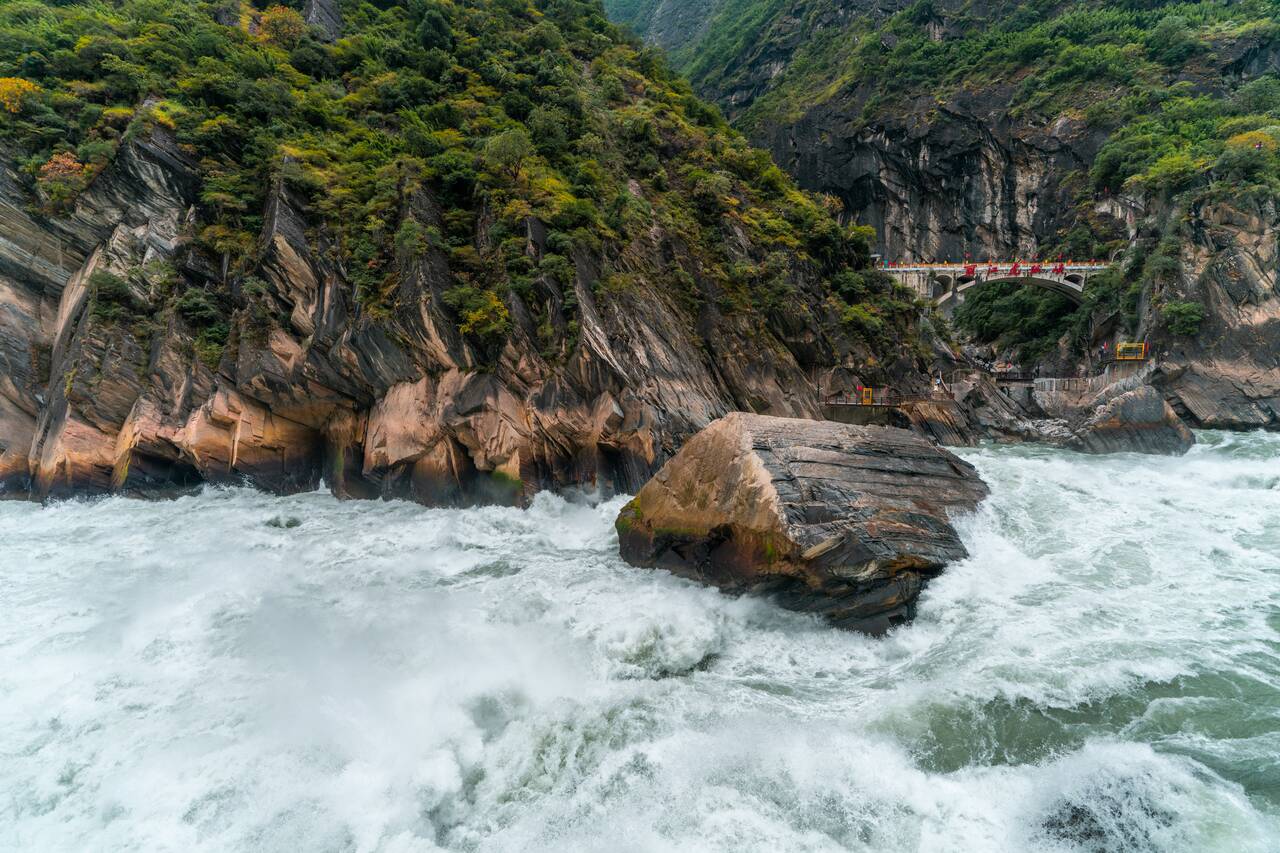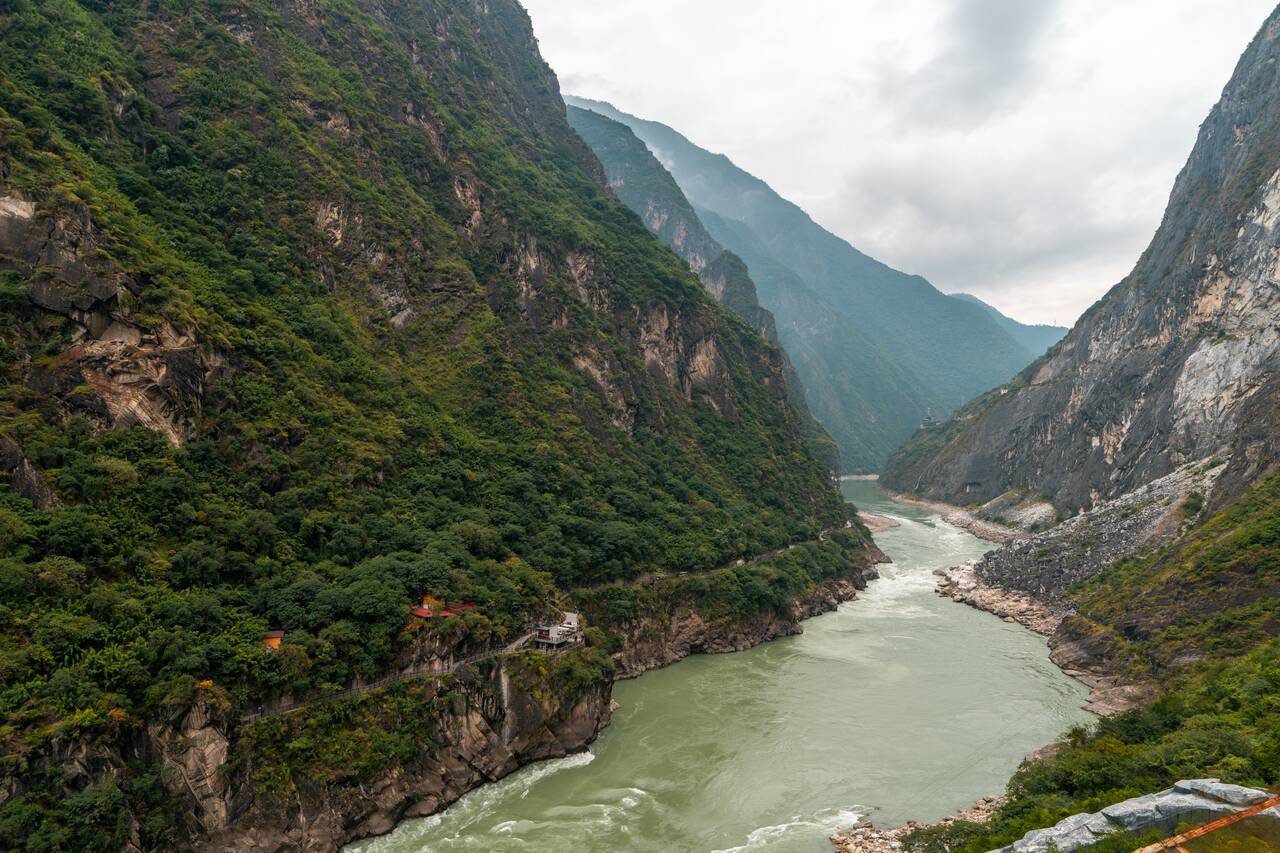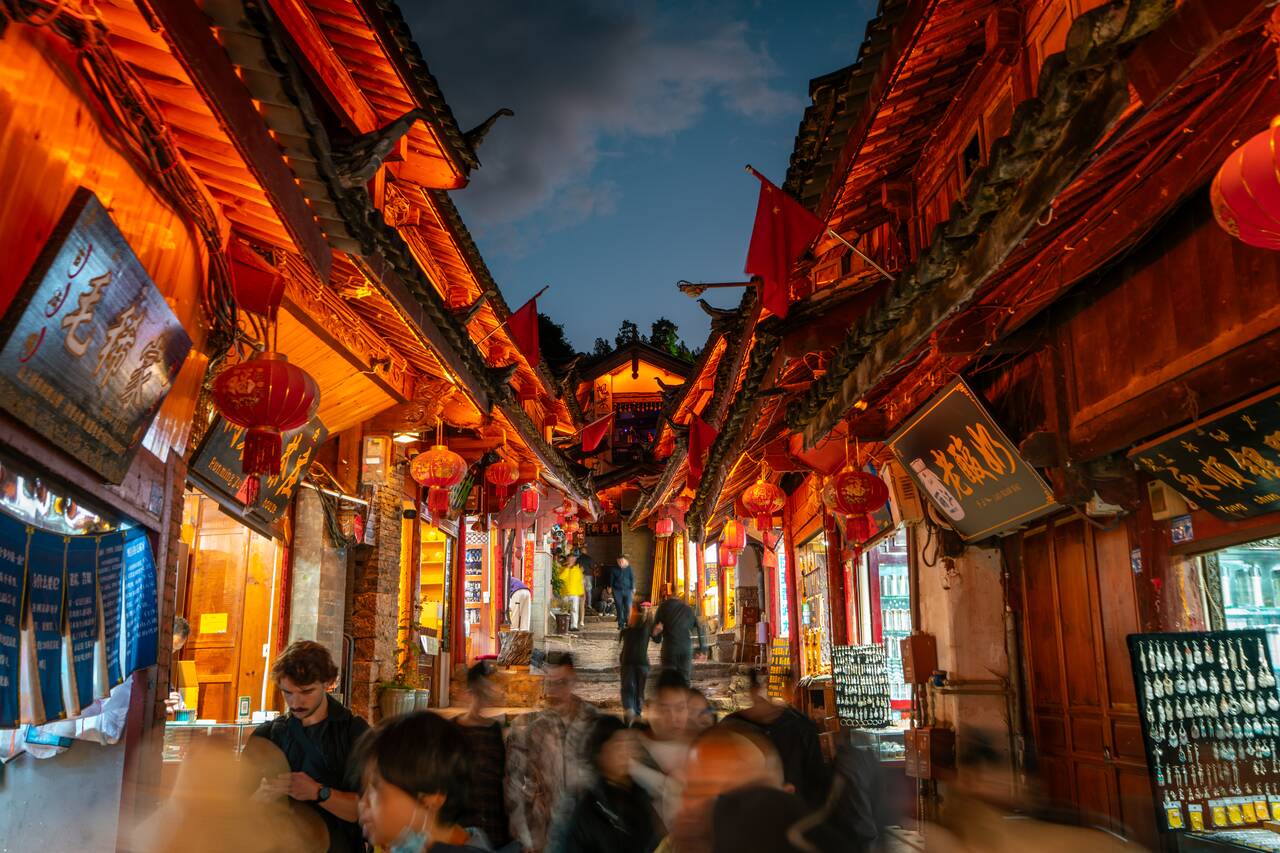Lijiang is one of Yunnan’s most beautiful destinations, where centuries of Naxi culture blend seamlessly with dramatic snow-capped mountains. Once an important stop on the ancient Tea Horse Road, the city grew as a trading hub linking Tibet, Sichuan, and Southeast Asia.
Today, its cobbled lanes, wooden courtyard homes, and flowing canals still echo the charm of that era, making it a perfect place to immerse yourself in the unique culture of this region. Lijiang is also an ideal base for exploring some of Yunnan's finest natural attractions, including Yulong Snow Mountain, one of the province’s most iconic peaks, and the spectacular Tiger Leaping Gorge.
In this guide, you will find all the information you need to plan the perfect trip to Lijiang, including the best things to do, where to stay, how to get around, and more. Without further ado, here’s a complete travel guide to Lijiang:
- Lijiang Things to Do Map
- Where to Stay in Lijiang?
-
10 Best Things to Do in Lijiang
- Visit Yulong Snow Mountain
- Check Out Blue Moon Valley
- Watch Impression Lijiang Performance
- Explore Lijiang Old Town
- Check Out the View from Mu Fu Mansion
- Check Out the Event at Old Town Waterwheel
- Enjoy the Mountain View at Black Dragon Pool Park
- Attend a Bonfire Dance at Sifang Street Square
- Explore Baisha Ancient Town
- Hike the Tiger Leaping Gorge or Visit as a Half-Day Trip
- Things to Know Before Visiting China
- When to Visit Lijiang?
- How to Get to Lijiang?
- How to Get Around Lijiang?
- How Many Days to Stay in Lijiang?
- What to Pack for Lijiang?
- Further Reading for China, Hong Kong, and Macau
Lijiang Things to Do Map
10 Best Things to Do in Lijiang
1. Visit Yulong Snow Mountain
Let's start with one of the most epic attractions and one of my personal favorites, Yulong Snow Mountain, also known as Jade Dragon Snow Mountain. Rising to 5,596 meters, it is one of Yunnan's most iconic natural landmarks, and its dramatic peak can often be seen from Lijiang on a clear day.
It is one of the first few snow-capped mountains you will see as you travel higher and higher into the mountains in Yunnan, and one that offers you a full day worth of adventure, with an organized shuttle bus taking you to the scenic area and a cable car that carries you all the way up to the 4,000+-meter viewing platform.
Due to the high demand and limited capacity of the cable car, the scenic area has a daily limit cap, and tickets are assigned in time slots to prevent overcrowding. The tickets are often released 3-4 days in advance and can be booked out quite fast during peak season, so you have to plan your trip beforehand.
- Huaxu Inn (Lijiang Ancient City Sifang Street Branch) (Budget)
- YinYue·Sifu Designer Scenic Inn (Lijiang Flagship Store) (Mid-Range) 👍 Top Pick
- Yueji·Homestay (High-End)
To secure your spot, I highly recommend booking the Yulong Snow Mountain cable car ticket at least three days in advance. You can book it through the Trip app under the label "Glacier National Park Cableway (with Shuttle Bus inside the park) + Lijiang Impressions Show (Adult)", which costs around 285 CNY. The ticket is usually issued within a few minutes and includes a time slot for the cable car. Keep in mind that this does not include the park entry fee of 100 CNY, which your guide will purchase for you upon arrival.
Once your tickets are secured, you will need to book a shuttle bus service from Lijiang to Yulong Snow Mountain and back that matches your chosen time slot. The service is listed as "Round-trip shuttle bus between Old Town of Lijiang and Yulong Snow Mountain + 1 oxygen bottle" and costs 46 CNY for a round trip.
You can choose between two departure times: 6:00–6:30 AM or 8:00–8:30 AM. The bus will pick you up near Lijiang Old Town, with the exact location usually confirmed the night before via WeChat, including the bus license plate, so be sure to check for the message. The return bus leaves Yulong Snow Mountain around 3:00 PM back to Lijiang, giving you plenty of time to visit the viewpoint, Blue Moon Valley and watch the Impression Lijiang performance, all of which are recommended.
When I booked my tickets, I had a 9:30 AM cable car time slot and a 1:30 PM time slot for the Impression Lijiang show. However, I didn’t want to miss the golden sunrise, so I took the 6:00 AM shuttle bus to Yulong Snow Mountain and arrived just in time to see the first rays of sunlight hitting the mountainside.
At the entrance to the scenic area, you are greeted by a large building where you can warm up, grab breakfast from one of the many restaurants inside, and wait for your scheduled cable car time. There are plenty of facilities here to keep you fed throughout the day, so there is no need to pack your own food for this trip.
When it’s time for your cable car, be sure to start lining up about 30 minutes before your scheduled time. This ensures you can get on the shuttle bus to the cable car station on time, as the queue can be quite long. For me, it took about 30 minutes to reach the shuttle bus.
The cable car takes about 25 minutes to reach the upper station, where you are greeted with stunning close-up views of Yulong Snow Mountain and the surrounding landscape. From there, you can hike to two additional platforms that reach up to 4,500 meters (14,764 feet) above sea level. Be sure to pace yourself, as the high altitude can make breathing more difficult.
You can spend between an hour or 2 up there, depending on how much you want to hike. There are toilets and snack bars up there just in case you need to use them. Once you are done, you can take the cable car down and catch a shuttle bus to Blue Moon Valley, which is another attraction you shouldn't miss.
Yulong Snow Mountain is open all year round from 6:30 AM to 4:40 PM with the last admission being at 3:00 PM, and it will take you an entire day, including a visit to Blue Moon Valley and Impression Lijiang show. As mentioned before, they have a limited daily capacity, so be sure to plan ahead. You can book all the tickets from here. This whole day trip should cost about 431 CNY per person, including everything.
Where to Stay in Lijiang?
2. Check Out Blue Moon Valley
As you explore Yulong Snow Mountain, be sure to also visit Blue Moon Valley, located at the foot of the mountain. You can easily reach there from Yulong Cable Car Station via a free shuttle bus inside the park.
Blue Moon Valley is a breathtaking natural attraction that is famous for its vivid turquoise rivers and wonderful mountain surroundings. The valley's name comes from the deep blue color of its water, which contrasts beautifully with the surrounding green forests and snow-capped peaks.
The shuttle bus should drop you off at a bus stop where you can either walk down to the lake or take its electric cart down, which will cost an extra 40 CNY per person. You can buy the ticket once you get here. The electric cart will take you to various stops along the lake, and if your time is limited (which is often the case with the 3 PM shuttle back), I highly recommend you take it so that you have some time to rest at the end.
After you arrive at the lake, you can explore the valley along well-maintained walking paths that lead past waterfalls, small lakes, and observation platforms. The landscape is especially stunning in the morning when the sunlight hits the water's rich blue color.
The lake is truly beautiful, but it becomes increasingly crowded as the day goes on. Depending on your cable car time slot, it may be worth visiting the lake first to enjoy it before the crowds arrive. There is no additional fee to visit the lake (except for the optional electric cart service), as it is located within the Yulong Snow Mountain Scenic Area. It typically takes about 30 minutes to an hour to explore the lake before heading back to the entrance.
3. Watch Impression Lijiang Performance
With the ticket I recommended, it also includes a ticket to see Impression Lijiang, an outdoor one-hour large-scale show performed by the local Naxi people, set against the dramatic backdrop of Yulong Snow Mountain.
Created by the famous Chinese director Zhang Yimou, the show brings Naxi culture, traditional music, dance, and folklore to life in a spectacular setting under the open sky. In most touristic places in China, you will often find these "Impression" shows that you can attend, with a similar one in Guilin. But what drew me to this show is the combination of its natural scenery, lighting, and performance.
With the stage painted red, set against the backdrop of epic snow-capped mountains and a clear blue sky, the show is a photographer's dream. While there were some memorable moments, I personally found the performance itself to be fairly average. However, the stunning setting more than makes up for it. I felt the show could benefit from more performances that fully utilize the beautiful stage and surroundings.
Nevertheless, it is still an incredible experience to include when visiting Yulong Snow Mountain if you have the time. The show lasts about one hour, and your time slot is issued with your cable car ticket, allowing you to use the same QR code to enter both. In my opinion, the best seats are in the middle, so if you want to secure a good spot, be sure to arrive early.
The show is included in the ticket I recommended. If you book it separately, tickets are available at the entrance for around 171 CNY per person. The show runs twice a day, at 1:20 PM and 2:50 PM, so be sure to plan your visit accordingly. If you want to see the performance, it is cheaper and more convenient to get the ticket along with your cable car pass rather than purchasing it separately.
4. Explore Lijiang Old Town
Lijiang Old Town is the heart of the city and one of the best-preserved ancient towns in China. With its cobbled streets, traditional Naxi architecture, and flowing canals, it feels like you are stepping back in time. The town has a maze-like layout, full of narrow alleyways, small bridges, and quaint courtyards, and you never know what beautiful hidden corners lie beyond them. It’s truly a wonderful place to explore.
While here, you can explore local markets, taste traditional Naxi snacks, and enjoy performances of ancient Naxi music, which have been passed down for generations. Key attractions include Sifang Street, Wangu Tower, and Mu Fu Mansion, each offering a glimpse into the town’s history, architecture, and unique Naxi culture.
The Old Town is especially beautiful at night, with its crisscrossing streets illuminated by lights. Various performances and shows come to life after dark, including the famous campfire dance ritual, which we will discuss later in the guide.
This is the liveliest part of Lijiang and a great place to experience a vibrant nighttime atmosphere. There are many bars and restaurants to relax in, or you can stroll around to try some of the delicious street food available. The Old Town is very big, with countless hidden alleyways that wind up and down the hill it sits on, so be sure to spend a few evenings exploring this remarkable historic area.
5. Check Out the View from Mu Fu Mansion
One of my favorite places in Lijiang Old Town has got to be Mu Fu Mansion, once the seat of the Mu family, the hereditary Naxi chieftains who ruled Lijiang for about 470 years through the Yuan, Ming, and Qing dynasties. It stands at the foot of Lion Mountain right at the center of Lijiang Old Town, and its architecture reflects not just Naxi traditions but also strong Han‑style palace design.
The mansion covers roughly 30,667 square meters and features a symmetrical layout that runs along a central east–west axis. Within its 162 rooms are grand halls and gardens, including the Wanjuan Tower (a library of Dongba scriptures and poetry), the Yuyin Building (for banquets and imperial decrees), the Sanqing Hall (a Taoist temple), and the Council Hall where the Mu rulers conducted affairs.
Over centuries, the residence has become a powerful symbol of regional governance. However, much of the original structure was damaged or destroyed during wars and later in the 1996 earthquake. Thanks to a reconstruction effort funded in part by the World Bank, Mu Fu Mansion was carefully rebuilt and reopened in 1999.
Today, Mu Fu Mansion operates as the Lijiang Ancient City museum, where you can walk through its courtyards, admire its architecture, and learn about Naxi history and culture. The layout itself is meaningful: the mansion faces east, and its position is said to align with spiritual symbolism, Lion Mountain behind, Jade Dragon Snow Mountain to the left, Tiger Mountain to the right.
The mansion is open from 8:00 AM to 6:00 PM, and the entry tickets cost around 40–60 CNY, depending on the season. Be sure to hike all the way up to the temple at the top of the hill for an incredible view of the Lijiang Old Town and its surroundings. Expect to spend at least an hour or two here.
6. Check Out the Event at Old Town Waterwheel
As I mentioned earlier, Lijiang Old Town is massive, and I almost missed visiting the Old Town Waterwheel, located right at the main entrance. I know 😅. In my defense, I didn’t enter from that side since my hotel was on the north side. It’s amazing to think that I nearly missed this beautiful town square, where many of the town’s events are held!
At the very entrance of Lijiang Old Town, you’ll find a pair of large wooden waterwheels, which are one of the most iconic symbols of the ancient town. Next to the waterwheels stands a distinctive screen wall, shaped like the front of a traditional Naxi residence.
This area, just in front of the town gate, opens into a small square where you can watch the wheels turning, hear the gentle rush of water, and soak in the atmosphere before stepping into the narrow alleys of the Ancient Town. Events are often held here, so it’s always worth checking out what’s happening.
When I visited, there was a marathon in the morning and a dance show in the afternoon, which I thought were pretty cool. If you're exploring Lijiang Old Town, don't forget to stop by and see the Old Town Waterwheel!
7. Enjoy the Mountain View at Black Dragon Pool Park
One of the most photogenic viewpoints near Lijiang Old Town that you shouldn't miss is from Black Dragon Pool Park, a beautiful park famous for its crystal-clear lake that perfectly reflects the Jade Dragon Snow Mountain on clear days.
This park is located at the northern edge of Lijiang Old Town and is easily accessible via the riverside walking path that takes you straight from the Old Town to the park. Simply follow the river along the cobblestone street, pass through an underpass beneath a road, and you’ll be greeted by a beautiful green space before the scenery opens up to a stunning lake with Yulong Snow Mountain rising majestically in the background.
I really love the park, especially in the morning when there aren’t many tourists and the sky is often clear, allowing the mountains to be fully visible rather than obscured by clouds. You can also come in the evening for a nice and quiet stroll around the lake where you will find many benches and pavilions to relax at.
The sunset crowds often gather around the southern edge of the lake for photos, but you can easily avoid them and enjoy the park in peace by walking deeper into its grounds. It is one of the most easily accessible and beautiful viewpoints in Lijiang Old Town, so be sure to include it in your visit.
8. Attend a Bonfire Dance at Sifang Street Square
As I mentioned earlier, one of the coolest traditions of the Naxi people that you can experience while here is the Bonfire dance ritual which often takes place at Sifang Street Square around 6:30 PM to 7 PM every day.
Every evening, the heart of Lijiang Old Town comes alive, where both locals and travelers gather in a warm, open-air circle around the bonfire and dance together beneath the lantern-lit sky. As the sun sets, the square fills with music: drums beat, flutes trill, and local dancers dressed in traditional Naxi costumes move in unison.
The dance is deeply rooted in Naxi tradition, and many locals perform the “Re Shuo Shuo” circle dance, holding hands, swinging their arms, and singing together in a gentle, rhythmic flow. This traditional Naxi circle dance is free and open to everyone, and you can join at any time.
I stumbled upon the bonfire accidentally while exploring Lijiang Old Town on my first night, and I was lucky enough to witness them lighting the fire and starting the dance. It was an amazing experience! It’s also a great way to stay warm, especially since I visited in late October when the nights are getting chilly. If you’re in Lijiang Old Town at night, be sure to stop by Sifang Street Square (Market Square) and witness this wonderful tradition.
9. Explore Baisha Ancient Town
Lijiang Old Town is quite commercialized and if you prefer a more rustic and authentic looking old town, I highly recommend you come and check out Baisha Ancient Town, one of the oldest Naxi settlements in the region located about 20 minutes' drive north of Lijiang Old Town. It was the political and cultural center of the Naxi people for centuries, and served as the base for the Mu chieftain family long before the rise of Dayan (Lijiang) as the dominant town.
One of the most remarkable features of Baisha are its frescoes. The murals in Dabaoji Palace and Liuli Temple date back to the Ming and Qing dynasties and blend themes from Tibetan Buddhism, Taoism, and the Naxi Dongba religion. These religious and cultural murals are real artistic treasures, with vivid, colorful compositions that tell stories of deities, local life, and folklore, which is something you can no longer find in Lijiang Old Town.
Beyond the murals, Baisha is also a living museum of Naxi culture. Its ancient streets are lined with traditional wooden and stone houses, old temples, and quiet courtyards. In the past, Baisha was a center for silk embroidery and traditional weaving, and nowadays you can visit the Naxi Embroidery Institute to see skilled artisans at work.
Baisha’s proximity to Yulong Snow Mountain also offers stunning views. On clear days, the snow-capped peaks are highly visible, beautifully framing the village’s rustic streets, stone rooftops, and traditional wooden architecture. Unfortunately, I was not so lucky with the weather, but I really enjoyed exploring Baisha, even more so than Lijiang Old Town.
Visiting Baisha gives a quieter, more authentic contrast to the busier Lijiang Old Town, so if you prefer that, be sure to come and check out Baisha Ancient Town. You should be able to reach the town via Didi taxi app and it should take you no more than 30 minutes to get here. You can also spend a night here in one of the many homestays, if you have time to spare.
10. Hike the Tiger Leaping Gorge or Visit as a Half-Day Trip
Last but not least, you can take a day trip to visit Tiger Leaping Gorge or spend two days hiking along the gorge and staying in villages along the way. I didn’t have time for the full hike and only visited the scenic area on a half-day trip, but it comes highly recommended by my friend who has explored China extensively.
For those with limited time and only a day to spare, you can visit Tiger Leaping Gorge via an organized shuttle service, which includes transportation between Lijiang and the gorge. You can book a one-way ticket if you plan to hike and stay overnight, which costs 47 CNY, or a round-trip ticket for 93 CNY.
The drive from Lijiang Old Town takes about two hours each way. Once you arrive, you’ll need to pay an entrance fee of 45 CNY. If you want to take the escalator down to save hiking time, it costs an additional 70 CNY, which your guide can get for you upon entering the scenic area.
Once at the gorge, you’ll have about an hour to explore the scenic area. You can hike down to the gorge or take the escalator. I chose the escalator so I could spend more time at the gorge, but there isn’t much to see and do down there aside from viewing the gorge itself. I was done with the place in less than 30 minutes, so if you want to save money, hiking down and back up is a better use of your time than waiting around doing nothing as I did.
Personally, it was a little bit underwhelming for such a long drive but that is the only time I have. If you have more time, maybe it will be a better experience hiking 2 days along the gorge. If you are interested it hiking, here's a hiking guide written by my friend Pashmina, that can help you plan.
Things to Know Before Visiting China
- Always Carry Your Passport: Everything revolves around your passport/ID in China, and it’s often used interchangeably as your main form of identification. Many major tourist attractions require you to show your passport when buying a ticket, and the ticket will then be linked to it. You’ll scan your passport again to enter. The same applies to high-speed trains. It’s best to carry your passport with you at all times while traveling in China.
- Get an eSIM: China’s cashless economy relies on constant internet access, so having a data connection is essential. I highly recommend getting an eSIM or a local SIM card for your trip. An eSIM is often better because the service is usually based in Hong Kong, which bypasses China’s Great Firewall, meaning you can access apps like Instagram and YouTube without a VPN. I suggest checking eSIM options on Klook or Trip.com, as they tend to be the most affordable.
- Use AMap to Navigate: Google Maps doesn’t work well in China, so local apps like AMap are much more informative and accurate for getting around. It even provides metro information, making it easy to navigate city subway systems. I used AMap throughout my entire trip, and it worked perfectly! In this guide, I’ll be linking locations with AMap links instead of Google Maps, so be sure to download it before your trip.
- Use LetsVPN to Bypass the Great Firewall: As you may know, many major websites such as Google, Facebook, Instagram, TikTok, and more are blocked in China. To access them, you’ll need a VPN like LetsVPN installed on both your phone and laptop before you arrive in China. This is crucial as once you're in the country, you won’t be able to search for or download VPN apps. I used LetsVPN during my trip, and it worked very well throughout. The service is affordable too, with a free tier offering limited data or a basic unlimited plan for just 5.99 USD per month.
- Connect Alipay with Your Credit Card: First, download Alipay from the app store, set up your account, and link it to your credit card. This will be one of the two main ways you’ll pay for services in China. Alipay also has mini-apps built in, such as Didi (China’s version of Uber), so you don’t need to download separate apps, and you can use them directly through Alipay. Very convenient!
- Get a Transport Card Working in Alipay: Once you have Alipay set up, you’ll need to verify your account before you can activate a transport card for metro and bus rides. First, if you’re not currently in the city you want to use, tap the city name in the top-left corner and select the correct city. After that, tap the “Transport” button and request a transport card. You’ll be asked to upload a photo of your passport for verification. Once approved, your transport card will be issued, and you can use the QR code to scan and pay for buses and metro rides.
- Get WeChat Set Up: WeChat is another essential app for communicating with locals, thanks to its built-in translation feature. It’s also widely used for payments as Alipay only works about 70% of the time, while WeChat is commonly needed for paying individuals, buying entry tickets at certain attractions, and more. Setting up WeChat can be a bit tricky though because you need verification from an existing user. The easiest way is to ask your hotel’s reception to help verify your account when you arrive in China, which is how I got mine activated.
- Use Trip.com / Trip App: For hotels, day trips, attraction tickets, train tickets, flights, and everything in between, you can use Trip.com or the Trip app to book all your travel needs. It’s very convenient, offers a great user experience, and has a generous cancellation policy that gives you more flexibility when traveling in China.
When to Visit Lijiang?
The best time to visit Lijiang is from March to June and September to November. During these months, the weather is mild, the skies are clear, and visibility around Yulong Snow Mountain is at its best. It’s also perfect for outdoor activities like hiking and photography, with plenty of opportunities to enjoy the region’s natural beauty.
In spring (March to May), temperatures are comfortable, flowers are in bloom, and the scenery around Lijiang is especially beautiful. Summer (June to August) can be warm and humid with frequent rain, but it’s also a lively time to visit, with more crowds and occasional downpours.
Autumn (September to November) offers the most stable weather of the year, with crisp air and clear days. It’s an excellent time to explore the old towns and enjoy the landscape without the summer rush. Winter (December to February) is colder but mostly dry, making it a good option for budget travelers, though mountain areas can feel quite snowy and chilly.
I visited in autumn, and it was perfect. There was a good mix of clear and cloudy days, and the weather was easy to plan around. Yulong Snow Mountain was often visible from Lijiang in the mornings, which was a highlight. It wasn’t as cold in the ancient towns as it was on the mountain, but still very manageable. The crowds were also lighter than in summer, and beautiful autumn colors were popping up everywhere. I highly recommend visiting during this time.
Avoid visiting during Chinese New Year (variable Jan-Feb) and National Day Golden Week (Oct 1-7) as Lijiang gets extremely packed, especially in the Old Town. That goes for other places in China as well. Avoid these periods like a plague!
How to Get to Lijiang?
By Plane: Lijiang Sanyi International Airport (LJG) is the main gateway into the city. Direct flights operate from major Chinese cities such as Kunming, Chengdu, Chongqing, Guangzhou, Beijing, and Shanghai. From the airport, it takes about 30 to 40 minutes to reach Lijiang Old Town by taxi or DiDi. There is also an airport shuttle bus that runs to Lijiang Old Town and Blue Sky Hotel.
You can find cheap flights to Lijiang from Trip.com, Skyscanner, or Expedia.
By Train: Lijiang is also connected by high-speed trains. The most popular routes are from Kunming, which takes around three hours, from Dali, which takes one to one and a half hours, and from Shangri-La, which takes about one hour. Trains arrive at Lijiang Railway Station, located about 15 to 20 minutes from Old Town and you can get a Didi to your accommodation. You can book the train here.
By Bus: Buses still run between nearby towns for places not fully covered by high-speed trains. Common routes include Dali to Lijiang, which takes about three hours, Shangri-La to Lijiang, which takes about four hours, and Tiger Leaping Gorge to Lijiang, which takes two to three hours. Although comfortable enough, buses are usually slower than trains. I generally don’t recommend taking buses if trains are available, as I consider them a last resort in China.
How to Get Around Lijiang?
Getting around Lijiang is very easy thanks to its compact layout and reliable transport options. Most travelers spend a lot of time in Lijiang Old Town, Shuhe Ancient Town, and Baisha Village, which are all relatively close to each other.
By Walking: Walking is the best way to explore Lijiang Old Town. The narrow alleys, stone bridges, and canals are all pedestrian-friendly, and many areas cannot be accessed by cars. If you are staying inside or near the Old Town, you will be able to walk to restaurants, shops, and most attractions.
By Didi: For places outside the Old Town, DiDi is the most convenient way to get around. Rides are cheap, quick, and easy to arrange through the app, and drivers can take you to places like Shuhe, Baisha, and more. You can use it through Alipay mini app. You can read more about Alipay here. This was how I got around the lake most of the time.
By Organized Tours: For day trips to Tiger Leaping Gorge, Yulong Snow Mountain, or Shaxi, you can join an organized tour, which can be found here. This removes the need to plan any logistics and makes the trip much easier.
Make sure you have WeChat installed and linked to your phone number so the tour agency can message you the meeting time, location, and the bus's license plate number. They usually send the details around 9 PM the night before.
How Many Days to Stay in Lijiang?
3 nights and 2 full days are the minimum I recommend. On your first half day, you can visit Tiger Leaping Gorge and then explore Lijiang Old Town. On the second day, you can spend the entire day at Yulong Snow Mountain. For a more relaxed pace, 4 nights and 3 full days would be ideal, giving you enough time to dedicate a full day to Lijiang and its nearby attractions.
What to Pack for Lijiang?
As you may already know, I am an advocate of light traveling, and indeed, packing light for a journey like this is a unique art form. Here are some packing tips for your upcoming trip to Lijiang, China:
- Walking/Hiking Shoes: With all the walking and possible hiking during your travel, a comfortable pair of shoes is a must. I recommend the Timberland 3-Eye Classic Boat Shoes that are my go-to pair for long strolls and hikes.
- Breathable Shirts: Given the potential for hot weather, pack a few breathable shirts for your outdoor adventures.
- Shorts/Jeans: Anticipate lots of walking during your travels? Be sure to pack some breathable shorts and a pair of Levi's jeans for when the weather cools. For women, leggings are excellent for both hot and cold climates, so consider packing some as well.
- Fleece Jacket: For colder weather, layering is the key, and a fleece jacket makes an excellent insulating layer. I recommend the Columbia Steens Mountain Fleece (for women).
- Outer Shell Jacket: An outer shell jacket is great for windy or rainy conditions. I highly recommend the Columbia Watertight Jacket (for women). It's lightweight, breathable, and even comes in a cool orange color.
- Down Jacket: In freezing temperatures, a down jacket is essential. The Columbia Men's Lone Fir Hooded Jacket (for women) is my choice. They are warm, lightweight, and available in various colors.
- Wool Beanie: A wool beanie is perfect for keeping your head and ears warm.
- Wool Gloves: I always have wool gloves handy to keep my hands warm in cold weather.
- Wool Socks: Don't forget to keep your feet warm with wool socks.
- Microfiber Towel: A Microfiber towel is the ideal backpacker's towel due to its lightness, quick drying, and compressibility.
- Camera: You should also pack a good camera for your trip so that you can capture all the beautiful experiences you might have. I recommend the Sony a7R V camera together with the Sony 24-70mm f2.8 GM II lens, which is probably the highest-performance camera and lens combination you can get right now.
- Power Bank: Keep your electronics charged on the go with a 20,000+ mAh Power Bank.
- Water Bottle: The Hydro Flask Trail Water Bottle is a great insulated water bottle to have with you in cities or on hiking trails. It is lightweight and can keep your water cold or warm for more than 12 hours. It's a total game-changer.
- Universal Adapter: You'll need just one universal adapter to plug in your electronics in any country you visit.
- Packing Cubes: Packing Cubes will help you save space in your backpack and keep all your belongings organized.
- Daypack: The Langly Alpha Globetrotter is my go-to everyday camera backpack. It's large enough to carry all my travel gear, and it comes with plenty of slots and pouches. Plus, it's stylish as hell!
- Large Backpack: You will need a large backpack to carry all of your stuff. I recommend the Osprey Atmos AG 65L backpack. With excellent weight distribution and a lifetime guarantee, you can't go wrong with Osprey.
For more information on what I pack in my backpack for this trip, check out: My Packing List: 60 Travel Essentials.
Now that we have all the information we need, it's time to start planning your trip! Here are some resources to help you get going:
Are you planning to travel independently? Be sure to check out my guide on How To Plan A Backpacking Trip here.
Further Reading for China, Hong Kong, and Macau
Looking for more information about your trip to China, Hong Kong, and Macau? Here is a collection of articles that you might find useful:
- Want to spend 5 days in Hong Kong? Here's a complete itinerary for you: Hong Kong in 5 Days: A Backpacker's Itinerary.
- First time in Hong Kong, but you are not sure where to begin? This is the guide for you: Visiting Hong Kong: 12 Awesome Things to Do & More.
- Macau is often called the Las Vegas of Asia, offering larger-than-life entertainment, a unique blend of Portuguese heritage, and so much more. If you’re planning a visit, be sure to check this out: Discover Macau: 10 Cool Things to Do & More.
- Guangzhou is the fourth-largest city in China and one of the wealthiest, with major trade activities taking place in and around the city for over 2,000 years. With so much history and so many places to explore, you’ll definitely want this comprehensive travel guide: Explore Guangzhou: 12 Incredible Things to Do & More.
- Guilin is, hands down, one of the most beautiful places I’ve seen in China. If you’re planning to visit, here is the comprehensive travel guide I wish I had! Check it out: Visiting Guilin: A Complete Travel Guide
- Looking for a complete itinerary to Guilin? Check out: 5-Day Itinerary in Guilin
- Want to visit Huangguoshu Waterfall, the largest waterfall in Asia? Check out this travel guide: Huangguoshu Waterfall: A Complete Travel Guide
- Visiting Guizhou and want to experience the rich culture of the Miao people? Why not visit Xijiang, the largest and arguably the most beautiful Miao stilted village in the region. Here’s a complete travel guide: Xijiang Village: A Complete Travel Guide
- Dali is one of Yunnan’s most charming and culturally rich destinations and a great place to start acclimatizing before visiting other high-altitude areas in the province. If you are planning a trip, be sure to check out this travel guide: Exploring Dali: A Complete Travel Guide
- The mythical town of Shangri-La, made famous by the novel "Lost Horizon", is real and located in China. If you want to visit Shangri-La, this travel guide provides all the information you need to plan the perfect trip: Discover Shangri-La: A Complete Travel Guide
- For more articles about China, visit the China travel guide, or explore my guides to Hong Kong and Macau.
- Planning a trip to East Asia? Explore all my articles on the East Asia Travel Guide page.
- You can find all my Asia-related articles here: Asia Travel Guide.
- For more of my travel guides like this, visit my Destinations page.
Disclosure: This post may contain affiliate links.
